XI Baikal Ice Marathon- Story by Organizer

Story by Organizer
“Baikal has been waiting for you for millions of years. To truly understand, within the timeframe of our lives, is like trying to compare the size of our galaxy with the universe. For millions of years the tectonic rift of lake Baikal is living its own life and the lake, a size similar to the distance between Moscow and St. Petersburg, has been breathing, giving birth to new life, in a powerful and mystic shamanistic sense, which takes one’s breath away” - Fedor Sarokvasha, athlete of the 11th Baikal Ice Marathon
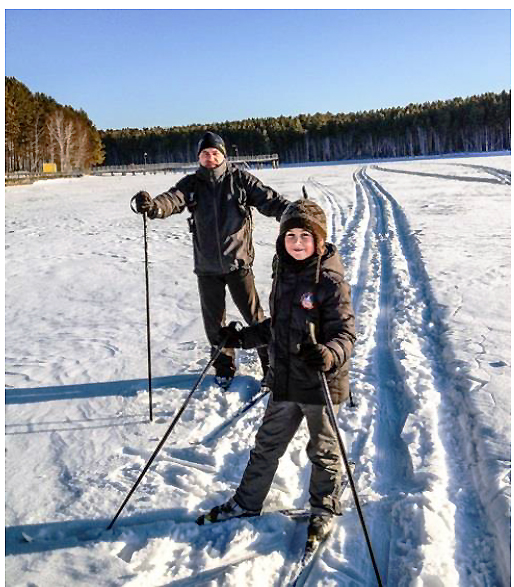
One week after the completion of the 11th Baikal Ice Marathon, I was skiing with my wife and grandson, making a path through the snow from our little wooden hut at the Zelionyi Mys (Green Cape) on the frozen Angara River. At first, we skied under the cover of the cape and it was sunny and very comfortable but as soon as we were out in the open valley we felt strong gusts of wind blowing from the river. Fifty metres out from the shoreline the wind was much stronger, so we came back closer to the river bank under the protection of the forest trees. I looked back at Lake Baikal, we could see the Khamar-Daban mountain range and the lake was a bit more than 25 km away, some four to five twists of the Angara River valley. This is the place where the famous and piercing Angara wind makes its start, speeding up along the wide valley, rising slightly then hitting the surface of Baikal with smashing intensity along its frozen surface.
This is the same accelerating and gusting wind that caught most of the runners in the 11th BIM held in 2015, after the 35km mark. They were already tired from the distance and the fierce wind was difficult to endure at this point in the race, with still some 7km to go until the finish line.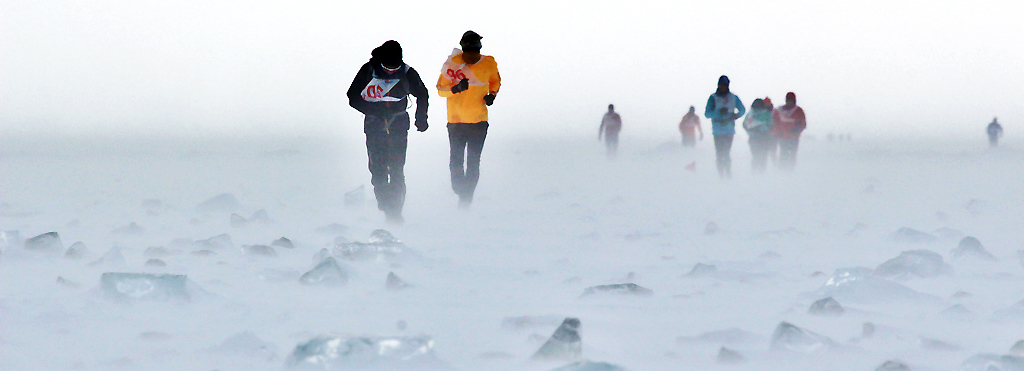
Right before the start of the race on March 1, early in the morning we were met not by the sharp Khius wind but another wind called Pokotukha ( meaning “rolling for a while”) which blows once every three or four years and covers only a small portion of the lake between Vydrino train station (near Tankhoi but slightly west) and Boyarskaya train station (about 80 km east of Tankhoi). It emerged from a small cloud suddenly appearing in the clear sky, spreading its feelers along the slopes of the range and then dropping down from the hilltops of Khamar-Daban. This wind usually brings heavy snow falls from the range and sometimes blizzards. After two or three sunny days at the end of February this year Pokotukha came to us on race day, the 1st of March. Hanging above the Khamar Daban range it was waiting for us…ready to unleash a blast of wind and snow.
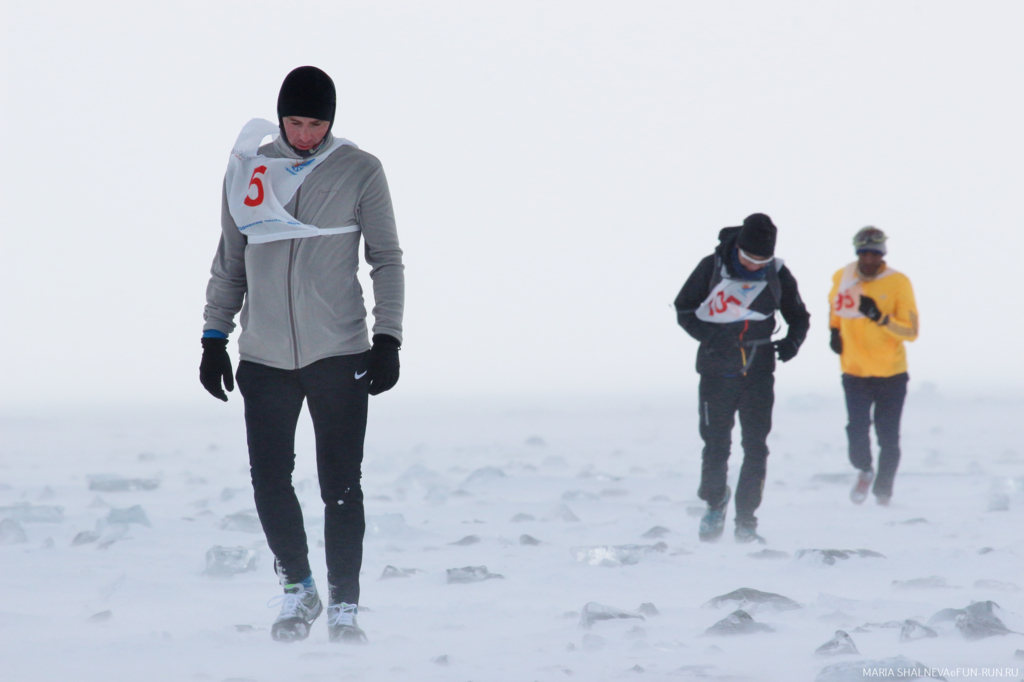 Pokotukha followed the runners for some time and then turned into sharp and severe north-west wind gusts, only occasionally interspersed with the treacherous Khius wind. Snow brought by Pokotukha on the first day of spring covered the ice surface of Baikal quickly and athletes had to run ankle deep in it. Just as the lake is unpredictable, so is the weather. Even the running trail which was cleared of snow with a light bulldozer was fully laden with it again within 25 minutes.
Pokotukha followed the runners for some time and then turned into sharp and severe north-west wind gusts, only occasionally interspersed with the treacherous Khius wind. Snow brought by Pokotukha on the first day of spring covered the ice surface of Baikal quickly and athletes had to run ankle deep in it. Just as the lake is unpredictable, so is the weather. Even the running trail which was cleared of snow with a light bulldozer was fully laden with it again within 25 minutes.
Fortunately, when the biting and gusting wind lost its strength towards the mid part of the lake we all gave sighs of relief. This was the moment when Baikal became calm and the sun caressed us with some warmth and tranquility for a while. Finally, we could catch our breaths and not think about this crazy snow storm race. Truly, it became easier to run for some time.
But very soon the snow was brought back again by another wind. This wind did not collect snow from the mountain but picked up fresh snow from the surface of the lake as well as shards of hardened snow from the lake's surface and hit us suddenly and then relentlessly in the face and body.
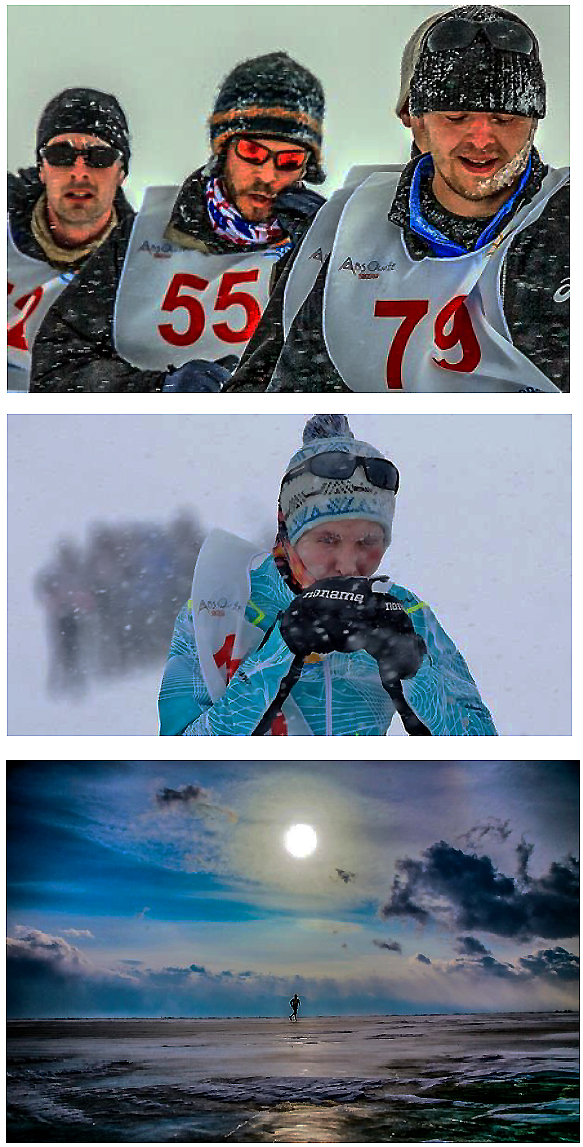 This was the Angara wind with a little whim of Verkhovik, the lengthwise wind which blows from the northern edge of the lake. First it came with a blast of snow and then waited a little before unleashing a fierce torrent of wind and snow at us…just so everyone could remember this beloved wind, the daughter of Baikal!
This was the Angara wind with a little whim of Verkhovik, the lengthwise wind which blows from the northern edge of the lake. First it came with a blast of snow and then waited a little before unleashing a fierce torrent of wind and snow at us…just so everyone could remember this beloved wind, the daughter of Baikal!
A few days later, Ivan Serebryakov from the city of Tver wrote: “In the meantime some 3 or 4 km was left till the finish line. It seemed to be a piece of cake and nothing to worry about but in real life it was exactly the opposite. From nowhere there came a strong, penetrating, bitter, icy and prickling wind! It cannot be called a wind. It is THE WIND! It happened to be our next test and trial from the Angara river along with the smooth, hard black ice on the lake. That wind was strong enough to blow people off the race track.”
There were also other difficulties besides the wind, one being fields of “kolobovnik” not far from the finish line. These ball-like or sometimes triangular lumps of autumnal ice become trapped in smooth ice making the surface irregular and difficult to walk or drive on and severely affect the pace of runners. Another danger is the possibility of encountering ridge cracks in the ice.
It was inspiring to see the commitment and confidence from experienced runners and the determination of others not so experienced during the race. The athletes on the BIM race course experienced moments of tears and desperation, leg cramps and a wish to stop the race as well as admirable persistence and courage, thankfulness and support of close friends, bodily heroism and a sense of the heart of Baikal in many people.
On the 1st of March Baikal did not simply let us on his premises but did it cunningly giving us a chance to experience four of his winds. The lake played with each of us individually, one by one, testing our strength and our faith.
In the photo of Harry Engels from Great Britain one can see the testing conditions during the race as runners made their way along the lake that day: the sun and two winds crossing each other seemingly waiting for the short respite to be over.
Great smiley in the Lake
.jpg) The organizing committee of the 11th BIM in 2015 were tense and nervous before the marathon as there was no support from local government or even from those who are tasked to deal with tourism in the region. Naturally, it is logical for authorities to support events like Baikal Ice Marathon which has become the most internationally known event on lake Baikal in winter.
The organizing committee of the 11th BIM in 2015 were tense and nervous before the marathon as there was no support from local government or even from those who are tasked to deal with tourism in the region. Naturally, it is logical for authorities to support events like Baikal Ice Marathon which has become the most internationally known event on lake Baikal in winter.
However in 2015, having declared that the 11th BIM would open a traditional “Winteriad” Baikal Winter Games Festival, the government agency for tourism in the Irkutsk region later announced that the Zimniada (Russian for “Winteriad”) festival had become outdated and the name was not liked anymore. Though recently the same officials affirmed the opposite and even managed to receive a few awards for it.
The official regional tourist officers had decided to cancel a successful event, negating all past efforts and considerable funding which was spent to promote Baikal Zimniada. Within only two years, the event had developed and highlighted important customs and traditions and now it was over and all when financing was not even an issue. Administrative and moral support was needed from government and tourism officials but none was offered. The winter events at the lake, after all, ultimately benefits the travel industry, people living here and the lake proper.
The media were consistently issuing warnings from State Inspection of Small Vessels (SISV) and head prosecutor's office about unlawful responsibility of organisers, danger to all participants etc. All kinds of specialists in all kinds of fields, who I do respect, were giving me advice to postpone the date of the event or the time of it or even cancel it altogether. One month before the start of the marathon no one, even those in our close community, considered the marathon could be held in its traditional format – from one shore of the lake to the opposite one. There was a sad doubtfulness among members of the organising committee, partners and contractors alike. However, Andrey Tanichev, biology scientist and head of the BIM support team, my family members had no doubt that the event would proceed despite the conditions.
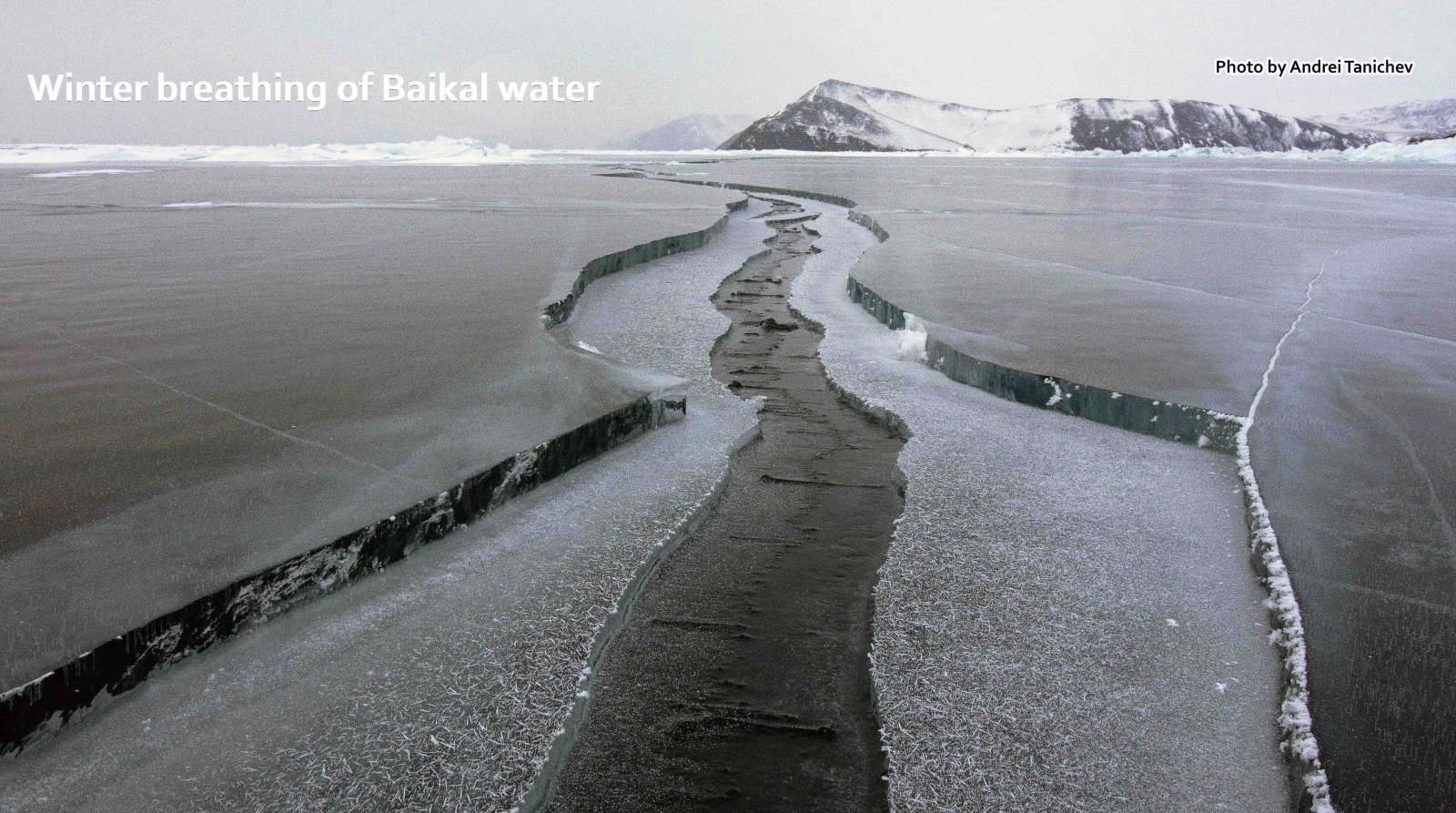 I must admit that during our first ice scouting on February 6, I really felt anxious when, late at night riding on a hovercraft, we slipped down from the ice into a huge gully and then drove in open water for about 10 minutes, 3 km from the shore of the lake. There were never such conditions as this at the lake. And then one idea would emerge in my mind: to get ready with a second option of the BIM run or plead an act of God, be humbled with circumstances, refund all runners or, alternatively, to organise a very nice and interesting expedition tour to the Pole of Baikal and to run there a bit. Bearing that thought in my mind at the time, I even forgot about Baikal itself.
I must admit that during our first ice scouting on February 6, I really felt anxious when, late at night riding on a hovercraft, we slipped down from the ice into a huge gully and then drove in open water for about 10 minutes, 3 km from the shore of the lake. There were never such conditions as this at the lake. And then one idea would emerge in my mind: to get ready with a second option of the BIM run or plead an act of God, be humbled with circumstances, refund all runners or, alternatively, to organise a very nice and interesting expedition tour to the Pole of Baikal and to run there a bit. Bearing that thought in my mind at the time, I even forgot about Baikal itself.
Later that night, I went down to the lake and after crossing the railway tracks near the shore, stepped onto the ice and started walking. The night was cloudless and starry. The moon had just started to wane...it was light and quiet. Having stopped by a small ice ridge I kneeled on the fresh ice of lake Baikal and glued myself to its dark crystal-clear glazed surface and started peering in and tuning myself out. Subconsciously, I was recording my feelings. I felt an urge to hear Baikal himself, right then amidst that starry night. He always had something to tell us. The only requirement was to have an adequate ear and prepared apprehension. At that very important moment, he certainly had a message for me, for us all.
From under the ice I could clearly hear the soft whisper of water. It had a kind of strange tone which sounded like a lullaby singing me to sleep. It was soft, vibrating and voice-like, flowing down around the submerged environs with its magical tone of a rarely heard voice.
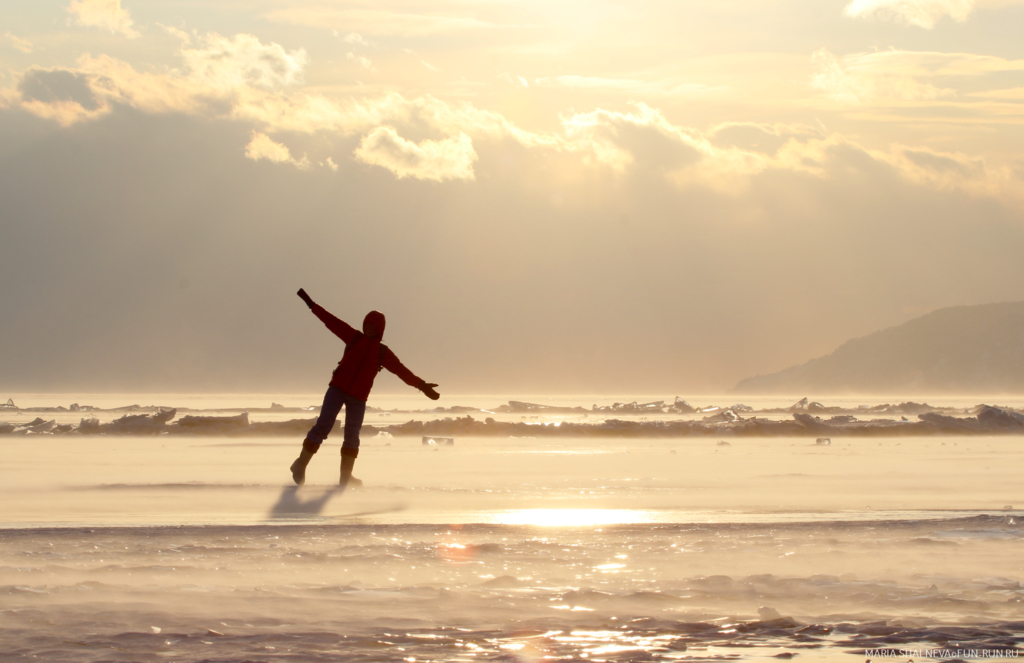
You could be forgiven to think it would be impossible for me to see the water under the ice. Though it is a remarkable reality: every sunny spring the water moves under the ice smoothing it, moving back and forth - but this was a special kind of reality for me: the water trembled under the ice, hugging close and then slightly pulling away. The water travelled under the ice, back and forth, as if it was above the ice, as it does in sunny weather at the very end of spring. It is quite difficult to express it with words but there was an evident feeling that night that the water, through its neural currents of micro-tides ebbing stealthily but assuredly, and though producing no real sound but still audible, was actually worrying about something.
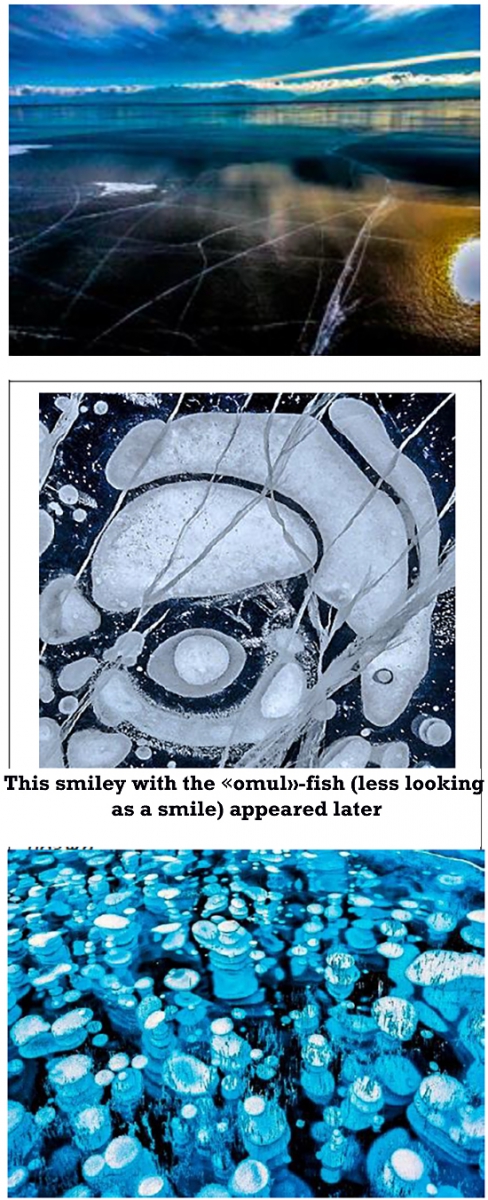
Suddenly, I saw three white bubbles coming up from the depths, growing bigger in size. Two of them broke into several smaller ones, perhaps when they had collided with the bottom of the ice and went aside disappearing from my sight. While the third bubble grew into a semi-oval form right under me and then rose up becoming bigger in size, a round form between 10-15 cm. That round bubble moved once again and became rigid, a frozen gas hydrate, I thought. I was about to stand up when I decided to have a look again at that white bubble with a curved line looking like a computer smiley and realised that it was showing me a graphically correct smile in the space of ice and the cosmic night. As though responding to my thoughtfulness and attention, several bubbles started rising rapidly from the depths and were then frozen at different levels from the surface. They all were circling around the big smiley face as in a kind of universal show of support in the suspended water.
That was the sign to me. The sign became so clear and gave me a thrill of excitement. Baikal was kindly grinning, showing me a trick with freezing water which he released from his underwater volcanoes! Suddenly there was a sound like a slap reminding me of a cold November tide followed by a powerful strike which shook the solid mass of frozen water I was standing on. The water was rushing onto the ice somewhere next to me and it was heading in my direction very fast making a swirling noise and then it paused and retreated into the darkness again. Then came the sharp north western wind. To stay on the shivering ice was not at all comfortable and I started walking back to the shore passing big openings which just appeared on the ice. I carried the smile of the lake inside me.
Late at night in my dreams, helped by my close encounter with the lake and his message to me, subconsciously and very quickly, I made a conclusion of what Baikal was telling me. His speech was neat and short as well as encouraging, I heard it as: “do your race, choosing the right course”.
The next day, on the way back across the lake from Tankhoi to Listvyanka, I thought about the gas hydrate smiley (as an ambassador of the deep interior of Baikal) and that its location might be a navigation spot for me in choosing a proper place for the only approach to the start line. I was then immediately caught up in another task and very soon forgot about it, only to remember it again just as it happened exactly that way.
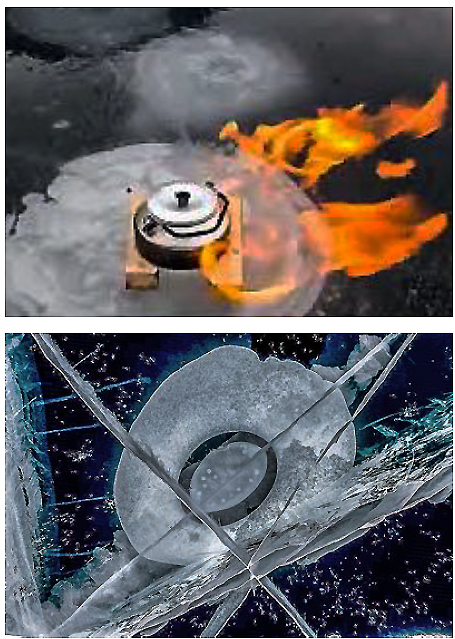
Note: After the lake freezes, methane gas emerges from below and is trapped in the frozen water forming methane hydrate bubbles. If you break the ice on the spot of a frozen bubble and strike a match to the hole a clear flame will come out which can go up to 1.5 meters high depending on the size of the bubble. Until recently it was one of the main winter amusements for children living on the shores of the lake. For a modern traveller walking on the ice of the lake it is one way to save some fuel as it's possible to boil some water on the lit flame of methane, after you pitch a tent some 30 metres away from locating the bubbles because the ice is 1.5 times thinner there. Very often those bubbles cause openings in the ice. More than likely, the big openings which appeared on the marathon track of the 11th BIM on both sides from 3 to 5 km long were gas openings. Today I can confess it. Personally, I thinkthat an underwater volcano called Malenkiy was activated after the flooding of the Boguchanskaya hydroelectric power station and a great number of earthquakes in the northern part of Baikal (during one week in January there were 50 tremors!) which caused unfrozen gas openings on both sides of the marathon track.
The amount of methane stored in the form of hydrates at the bottom of Lake Baikal is an estimated 424 Gt of methane. By comparison, the amount of methane in the atmosphere is about 5 Gt. If the water level in Lake Baikal falls, the pressure on the methane hydrates would decrease, resulting in huge methane eruptions. Then Lake Baikal is likely to trigger the world’s climate collapse!!
Before the Start
Ice pressure ridge cracks (temperature seams) appear during fluctuations in day and night temperatures every winter at the Lake. Being of varying lengths, from 10 to 30 km, they stretch out like a crack going through the ice between two neighboring headlands or two shore cusps along the shortest possible route. At the place of the marathon the main “dead ice crack” with a length of 25 km, stretches from Listvyanka settlement to Tolsty Cape on the Circum Baikal Railroad. This crack crosses the track of the race differently every year curving from 14 to 20 km off Listvyanka settlement. It is very much desirable for marathon organisers to see that crack not moving apart for more than a metre wide. In general, we would watch that crack and monitor its behaviour constantly prior the marathon and during it. That's why all the “dead crack horror stories” played up by the media did not bother us much. We were more preoccupied by the very late freezing of Baikal, the open gas and warm water holes and ice depressions on both sides of the 11th BIM track.
 We informed everyone in our mailouts that the young ice set in the last weeks of January was broken up by the wind. It often happens at the lake that 25cm thick ice can be broken with a stormy wind coming down on the icy surface. Blowing powerfully with strong gusts on the surface of Baikal and swinging wildly from side to side the wind strikes and breaks the ice, creating underwater waves and tearing out even thick ice and this year it happened more often. Kultuk Bay in the southern part of the lake could not freeze over for a long time this year. The level of Baikal was lowered to a critical mark, if not lower than that, through the fault of the local hydro-electric energy authorities and due to the Meteorological Centre of Russia which unequivocally offered prospects of a high-water level in 2014.
We informed everyone in our mailouts that the young ice set in the last weeks of January was broken up by the wind. It often happens at the lake that 25cm thick ice can be broken with a stormy wind coming down on the icy surface. Blowing powerfully with strong gusts on the surface of Baikal and swinging wildly from side to side the wind strikes and breaks the ice, creating underwater waves and tearing out even thick ice and this year it happened more often. Kultuk Bay in the southern part of the lake could not freeze over for a long time this year. The level of Baikal was lowered to a critical mark, if not lower than that, through the fault of the local hydro-electric energy authorities and due to the Meteorological Centre of Russia which unequivocally offered prospects of a high-water level in 2014.
Maybe it was the low level of water in Baikal that caused a very unusual occurrence of ice riding up onto another layer of ice in the open sea right across the Angara outflow (16 kм from the finish line). In one place, the course of the marathon ran across a closed crack which interlocked in a very strange way: one gigantic piece rode up on a thinner piece without breaking it. At the point where the two ice sheets met, the lower piece of ice was 2cm thinner than the upper one. That is why we were monitoring that particular place leaving wooden boards there to use if required. We had an Irkutsk rescue team watching it, using a hovercraft and snow mobile support team.
It happened that Baikal gave us a clue where to make a future course for the marathon in March of 2015. There is a saying “Trust in God but keep your powder dry” and that is why we were checking the behaviour of cracks and openings on both sides of the course daily. In two weeks of observations it was clear that whatever was happening on the lake, nothing was happening close to our planned track which was 5 km away from all openings and unstable portions of ice surface. The organiser of a night league ice hockey match had to relocate his game venue as at one point, some people were drifting on a piece of ice next to Listvyanka settlement. Local fishermen were afraid to set their nets under the ice in their usual places. German extreme athletes lead by our Stefan Schlett (a BIM three times participant) could not keep riding their bicycles because of very wide strip of open water and even snow mobile riders decided not to take a risk to traverse on the ice.

 The situation on both sides of the future course of the BIM could change several times a week. The ice was moving back and forth in the open water, opening and closing, becoming wider or narrower all the time. One could see it on pictures during our ice scouting trips and we learned it from captains of hovercrafts. But our track (and now already yours) of BIM was staying at the same position stable and firm, away from places of local dangers on ice. So the very first chosen course of the 11th BIM was basically left as it was from Listvyanka with a right heading to Vydrino to a dead crack and from that place there was a turn to Tankhoi to a passage through an area of ice fields and to the ice ridge and finally to the start line near the information centre of Baikal National Park. The ice was growing and gradually becoming thicker and more solid. We felt sure of the relative safety of our ice course.
The situation on both sides of the future course of the BIM could change several times a week. The ice was moving back and forth in the open water, opening and closing, becoming wider or narrower all the time. One could see it on pictures during our ice scouting trips and we learned it from captains of hovercrafts. But our track (and now already yours) of BIM was staying at the same position stable and firm, away from places of local dangers on ice. So the very first chosen course of the 11th BIM was basically left as it was from Listvyanka with a right heading to Vydrino to a dead crack and from that place there was a turn to Tankhoi to a passage through an area of ice fields and to the ice ridge and finally to the start line near the information centre of Baikal National Park. The ice was growing and gradually becoming thicker and more solid. We felt sure of the relative safety of our ice course.
On the 26th of February we invited an official representative of State Inspection of Small Vessels of EMERCOM to join us for our regular ice scouting trip. The inspection also dealt with safety on ice crossings (although SISV are not a rescue team organization). A brief report of that ice scouting trip was also mailed out to all participants. The only thing I would like to mention is that the trip was very successful and strengthened our confidence for the safety of our runners.
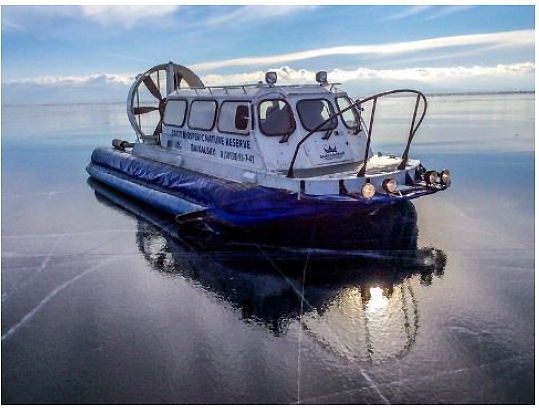
The following day we received an official letter from the State Inspection office notifying us that they inspected a portion of the ice located near BIM track and all the ice measurements did not qualify for safety of the marathon! We, the organising committee of BIM, set up that trip ourselves, covered all expenses and invited an inspector to take part however the survey report was not given to us to sign, as has been done many times previously. It meant that the document was signed only by one of their employees since he was the only one with us there on board the hovercraft and could witness it. Nowadays everyone can legalise official documents individually! And if one inspector, depending on a personal imagination or a set task to him, can freely write the content of the report, another one can correct it in accordance to his own thinking. And then at a cost to us claim or accuse us of irrationality.
In this case it would be very reasonable to have such an inspector (funded by the State Inspection office) positioned on marathon day near the dead crack in Listvyanka settlement, where apart from the marathon runners there were lots of tourists, children and people gathering. The inspector could monitor one of the cracks and put caution tape around dangerous places where children could play. However, they did not offer to do this, and all safety personnel were arranged by us at our own cost.
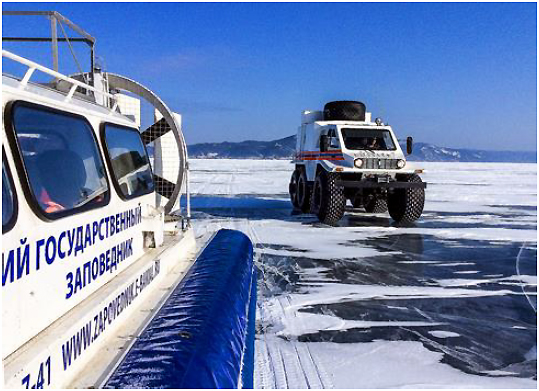 I should say that there was no pressure on us from any kind of authorities and none required us to cancel the marathon as an ultimatum. A large amount of stress was caused by a stubborn campaign by officials to stop every action or event taking place on the ice without considering where and how the event was going to be carried out, and who was organising it – effectively tarring all people with one brush. Someone said loudly and quite succinctly: “It's easier to ban walking along boulevards than to clean them up”. Of course, Lake Baikal is not a road but a self-willed Great Lake and no one disregarded it but during a short history we have acquired some experience of laying a running course in that part of the lake. A large amount of work is done prior to the marathon: ice monitoring, ice scouting, choosing a place, track drafting and flag-marking. The organisers would not decide to carry out a marathon event if they saw that the conditions were not safe for our athletes.
I should say that there was no pressure on us from any kind of authorities and none required us to cancel the marathon as an ultimatum. A large amount of stress was caused by a stubborn campaign by officials to stop every action or event taking place on the ice without considering where and how the event was going to be carried out, and who was organising it – effectively tarring all people with one brush. Someone said loudly and quite succinctly: “It's easier to ban walking along boulevards than to clean them up”. Of course, Lake Baikal is not a road but a self-willed Great Lake and no one disregarded it but during a short history we have acquired some experience of laying a running course in that part of the lake. A large amount of work is done prior to the marathon: ice monitoring, ice scouting, choosing a place, track drafting and flag-marking. The organisers would not decide to carry out a marathon event if they saw that the conditions were not safe for our athletes.
Meanwhile the small office of Absolute Siberia was rocking like a boat with telephone calls and e-mails. Many of the already registered runners had not read the rules and statutes of the 11th BIM or they had read it very inattentively. The document contained all principal terms and conditions but we found that some runners were not at all familiar with the geography of two opposite shores of the lake, some of them could not or did not bother to understand “not a road or not a trail” or the unique features of BIM. Another one demanded special conditions questioning why there were no portable toilets at every refreshment station; some people complained they could not stay with their friends in one hotel or were really against staying on the eastern shore of Baikal.
One British participant surprised us most of all. He had been constantly saying a good word about the event and did not mention his Russian friend who had been late for the registration. When he learned that the application of his Russian friend, presumably a wealthy individual with some level of influence, was not accepted point blank, he appeared very confused and yelled “How come? He is an oligarch!”. It seemed as though the Brit had incorrectly presumed that in Russia, any wealthy person can get what he wants, and the rules don’t matter.
Bearing that situation in mind I thought about those of us who had also become oligarch through the nature of our work, the volume of it and the type of support provided by us to many Russian sportsmen during this marathon's existence. Also through regional financing of sports and the travel industry.
In total there were about 500 applications received for the 11th BIM and the registration process was completed on time. Two running clubs from Europe did not manage to get financing from their sponsors and had to stay at home. Due to that we extended the registration and were able to accept those who were happy to be on a waiting list. Unfortunately, as the freezing of the lake was not stable that year, we could accept no more than 190 runners.
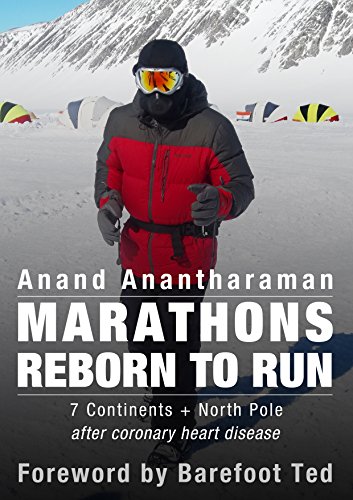 However not all runners made it to the start line due to varying reasons: late flights, flight cancellations etc. Several Russian runners, two German runners and one Canadian could not come. 62-year old first Indian marathon runner Anand Anantkharaman also could not come. Years ago, this gentleman was diagnosed by doctors with ischemic heart disease, but he had started running marathons and had run on all seven continents. He had written of his experiences in his book “Reborn to run”. It was sad that he could not come that year to the lake. A week before his trip to Russia his application for a Russian visa, which was sent to him by e-mail did not satisfy the Russian consulate office in Delhi. They refused to issue a visa to him asking for a hard copy of all documents. Immediately an original copy of the invitation was mailed to him by DHL post service and several hours before the visit to the consulate Anand received it. As he entered the Russian consulate he received a phone call from Mumbai informing him about the serious illness of a close relative. We hope that Anand Anantkharaman will come to Baikal next year and will take part in the race of Baikal Ice Marathon and will feel energised again by it.
However not all runners made it to the start line due to varying reasons: late flights, flight cancellations etc. Several Russian runners, two German runners and one Canadian could not come. 62-year old first Indian marathon runner Anand Anantkharaman also could not come. Years ago, this gentleman was diagnosed by doctors with ischemic heart disease, but he had started running marathons and had run on all seven continents. He had written of his experiences in his book “Reborn to run”. It was sad that he could not come that year to the lake. A week before his trip to Russia his application for a Russian visa, which was sent to him by e-mail did not satisfy the Russian consulate office in Delhi. They refused to issue a visa to him asking for a hard copy of all documents. Immediately an original copy of the invitation was mailed to him by DHL post service and several hours before the visit to the consulate Anand received it. As he entered the Russian consulate he received a phone call from Mumbai informing him about the serious illness of a close relative. We hope that Anand Anantkharaman will come to Baikal next year and will take part in the race of Baikal Ice Marathon and will feel energised again by it.
First «students» of Baikal Ice Marathon
 On the 24th of February 2015, the first students participating in a training course for runners of BIM, landed in Irkutsk. The group of eight were: Mikhail Anuchin and Alexey Komissarov from Moscow, Vasily Markov from St. Petersburg, Diana Ramasanova from Kazan, Alehandro Alcantara Avila – an air-force colonel from Mexico (who in a steam bath was surprised by us with a bath hat with a real colonel logo), Andrew Hudson from Australia (who has run marathons on all seven continents), Japanese runner Shimpei Fudjitsa, studying Russian in Irkutsk and Katy Stallard from Great Britain.
On the 24th of February 2015, the first students participating in a training course for runners of BIM, landed in Irkutsk. The group of eight were: Mikhail Anuchin and Alexey Komissarov from Moscow, Vasily Markov from St. Petersburg, Diana Ramasanova from Kazan, Alehandro Alcantara Avila – an air-force colonel from Mexico (who in a steam bath was surprised by us with a bath hat with a real colonel logo), Andrew Hudson from Australia (who has run marathons on all seven continents), Japanese runner Shimpei Fudjitsa, studying Russian in Irkutsk and Katy Stallard from Great Britain.
A special acclimatization and training program was provided for them, staying in the foothills of Sobolinnaya mountain, and it included running courses, downhill skiing, visits to ice steam baths, fresh local berry soft drinks daily, lectures and orientations and great support and care from the organisers. The program allowed the students to get accustomed to the Baikal atmosphere with an elevation of 455 meters above sea level in the shortest possible time and get a pass to BIM (in case a runner did not have any experience running trails longer than 10 km). For those who had that kind of experience it became a great opportunity to get ready for BIM and have a good time there. All of this was supervised by ice marathon expert Arkady Kalikhman (the first to run across the lake between Listviyanka settlement to Tankhoi village 46 years ago and many-time champion of BIM) and also under the great care of our Lyuba Belousova. And it goes without saying that the success of the event was due to the close proximity of lake Baikal itself.
.jpg)
It's a pity that I could not personally greet the seven pioneers at the Baikal training course whose names will be inscribed on the second stele, a commemorative plaque, for the 15th BIM. I believe the program was a success, as after the event I had the opportunity to speak with several participants. It became obvious after talking with Diana Ramasanova, who did not have any experience in running long distances and was allowed to run 15 km. However, after covering that distance and still feeling strong decided to keep on running. She completed the half marathon course in 3 hours 18 minutes finishing 13th out of 22 female participants who were all experienced half marathon runners!
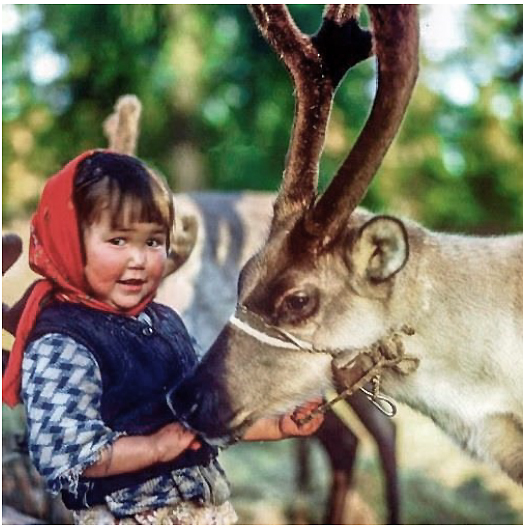 Just a few days prior to the 11th marathon we received official confirmation that Absolute Siberia were permitted to hold events complying with the fundamentals of socially responsible tourism, as stated in the Capetown declaration. Once again, we earned the right to use the logo of International Day of Responsible Tourism, which is usually celebrated during orld Travel Market exhibition in London every year. We are working on a social program called Return of Reindeer in the Toffalaria region. After the 11th marathon we prepard a parcel for the ethnic and cultural centre “Tofa” in the village of Alygdzher for toff children (a computer, nature books and handicrafts kit). Unfortunately, the smallest minority of Siberia, ancient reindeer breeders tribe Karagas (a clan of black goose) may soon lose its own native language. Taking this opportunity, I would like to appeal to all our athletes: if any one of you has a wish or opportunity to support the local tofa community, call us. We will tell in detail how you can help. And for the next marathon we might invite a young tofa guy to take part in our training and run course .
Just a few days prior to the 11th marathon we received official confirmation that Absolute Siberia were permitted to hold events complying with the fundamentals of socially responsible tourism, as stated in the Capetown declaration. Once again, we earned the right to use the logo of International Day of Responsible Tourism, which is usually celebrated during orld Travel Market exhibition in London every year. We are working on a social program called Return of Reindeer in the Toffalaria region. After the 11th marathon we prepard a parcel for the ethnic and cultural centre “Tofa” in the village of Alygdzher for toff children (a computer, nature books and handicrafts kit). Unfortunately, the smallest minority of Siberia, ancient reindeer breeders tribe Karagas (a clan of black goose) may soon lose its own native language. Taking this opportunity, I would like to appeal to all our athletes: if any one of you has a wish or opportunity to support the local tofa community, call us. We will tell in detail how you can help. And for the next marathon we might invite a young tofa guy to take part in our training and run course .
Last preparations before «Pokatukha» wind
On February 8th, a few hours before the pre-start briefing, we received an unverified message that the dead crack beyond the 16th km had become several meters wider. We were just about to take our «polar scientists» Aldar Batomkulov and Stanislav Pavlov to the eastern shore of the lake at the start of the race (where they overnight in a tent preparing the start of the marathon. We all thank them for that). So, we went there and checked the crack which had become much narrower and was about 2 cm wide. Some water appeared on the surface and so we decided to monitor it starting the next morning and bring some wooden boards 3 inches thick.
Right after the briefing together with Andrey Tanichev we reviewed the logistics of the whole event once again, the placements and arrangements and a traffic plan. It appeared that all was looking good before the start. Everything was foreseen and provided for. We even managed to get ten hovercrafts instead of the planned eight vehicles and brought two portable toilet amenities to the middle of the lake to the 21 km mark. It could be done only by our Ice Captain, Alexei Iliin, taking big oversized cabins on his Toyota van. On the day of the marathon we decided not to use traditional vehicles on the ice. Frankly speaking, there were not many people at all wishing to go on the ice.
At around 10pm, on the night before the race, the Baikal Rescue Team dispatcher called us warning us about an approaching storm with north-west winds up to 20 meters per second with gusts and a snow blizzard. We were really worried by that forecast but decided not to burden our runners with that information. Prior to the marathon we worked out our logistics which allowed us to use six hovercrafts at the refreshment stations and three travelling back and forth along the track of the marathon. Marking flags were placed closer together; 21 km base camp would be well heated; hot water would be provided (we were boiling water even in the middle of the lake), and before the start everybody will be inside in a warm place. We decided to increase the number of snow mobiles to make a road track in case we needed one and keep the marathon course freshly clean. Unfortunately, in the morning we had to upset three journalists for not letting them make videos and photos by following the marathon runners on the course.
The rest of that night was not a peaceful one for the organisers. Despite the forecast, the night was starry and quiet. Baikal had been waiting for the start and his winds were ready to perform.
In the morning our pre-start discords continued. After 7:00am the captain of the Mars hovercraft called saying that his vessel broke its air cushion in Listvyanka and would not be able to be used on the run. It was just one vessel which happened to be out of operation but in our case, it was a breakage in our safety plan for the marathon. We had to reconfigure everything: provision of refreshment stations, transportation of runners and provision of maximal safety during the whole event. In the unstable ice conditions on the lake every Actor (hovercraft) has its own logistic number and set traffic route. And if only one vessel is out of the plan, it can be managed but the situation becomes very tense. To appreciate the complexity of the situation, this special action card which Andrei Tanichev gives out to every member of the support team, gives a good explanation:
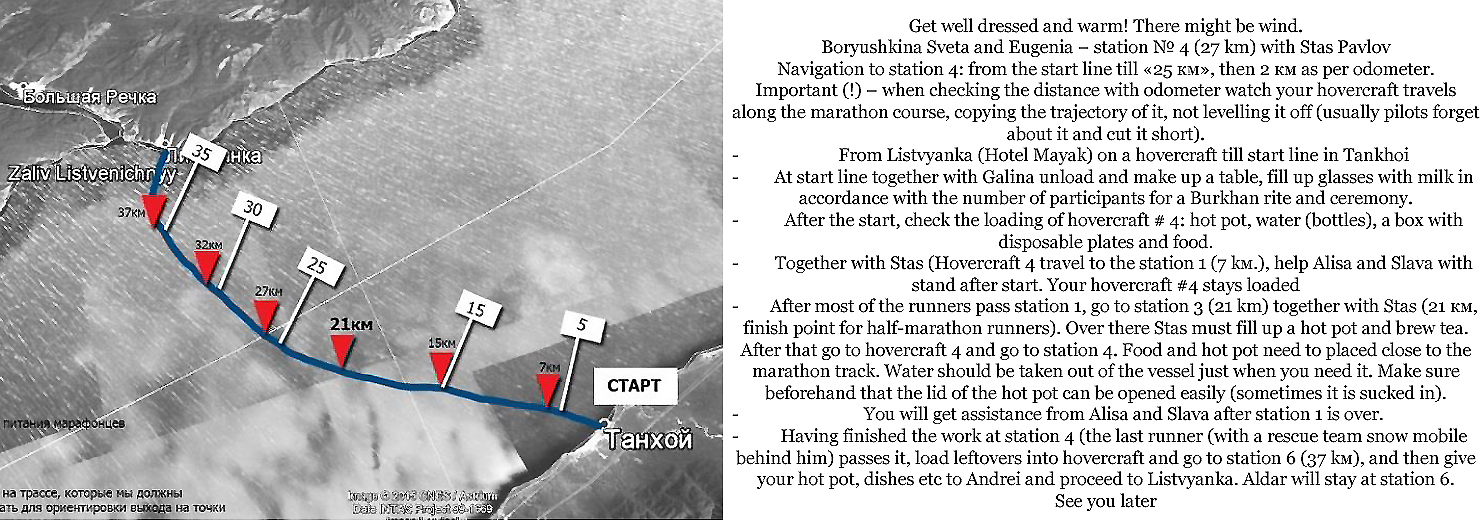
 Finally, having loaded all participants who stayed in Listvyanka on their respective hovercrafts, we all started driving in a convoy to the start in Tankhoi on the eastern shore of the lake where we already had transported all other runners who overnighted in the town of Baikalsk.
Finally, having loaded all participants who stayed in Listvyanka on their respective hovercrafts, we all started driving in a convoy to the start in Tankhoi on the eastern shore of the lake where we already had transported all other runners who overnighted in the town of Baikalsk.
Observing from the rear of the convoy of hovercrafts and snow mobiles we noticed that the largest hovercraft (13 seat Leopard vessel) was not moving properly. First it could not speed up to normal speed using its air cushion and then its tail started swinging from side to and drifting sideways off the course. The north-west wind started blowing and dragging Leopard from the track. We urgently radioed to Konstantin Mamadzhanov who was setting up a base camp at the 21 km mark and asked him to return. With two other hovercrafts we caught up with the Leopard vessel and picked up 13 scared runners (one British runner wrote later that people came to rescue them with another hovercraft). After giving instructions to the captain of the Leopard to drive empty to the 21st km and station there, we headed without stopping towards Tankhoi.
I was most concerned as we could no longer rely on our most spacious Leopard hovercraft which was to play an important role for us in the event. That is why there was a delay before the start of the marathon for more than an hour. And we lost another 20 minutes having to change all logistics. It was great that the Baikal Biospheric Reserve could host our runners before the start in its new visitors and information centre building treating us with tea, warm shelter and nice picture gallery of fauna of the lake.
As far as I noticed everybody performed a local Baikal rite with white food and many of the runners did it sincerely and without smirking, asking for permission to step on the frozen water of the lake. The energy levels were high and it was time to start running.
Meanwhile, having determined the start signal, Pokotukha began her own ritual from the Khamar-Daban mountains covering the race track with snow and shutting out all horizons of visibility.
You all started out with good thoughts and pure hearts on the first day of spring on top of the frozen water of majestic Lake Baikal.
The story of the run itself was told by you all. I will continue the narration of the 11th BIM with stories of participants taken from all the kind reports and stories we received about the run (name of authors and references to full texts are given at the end of this article).
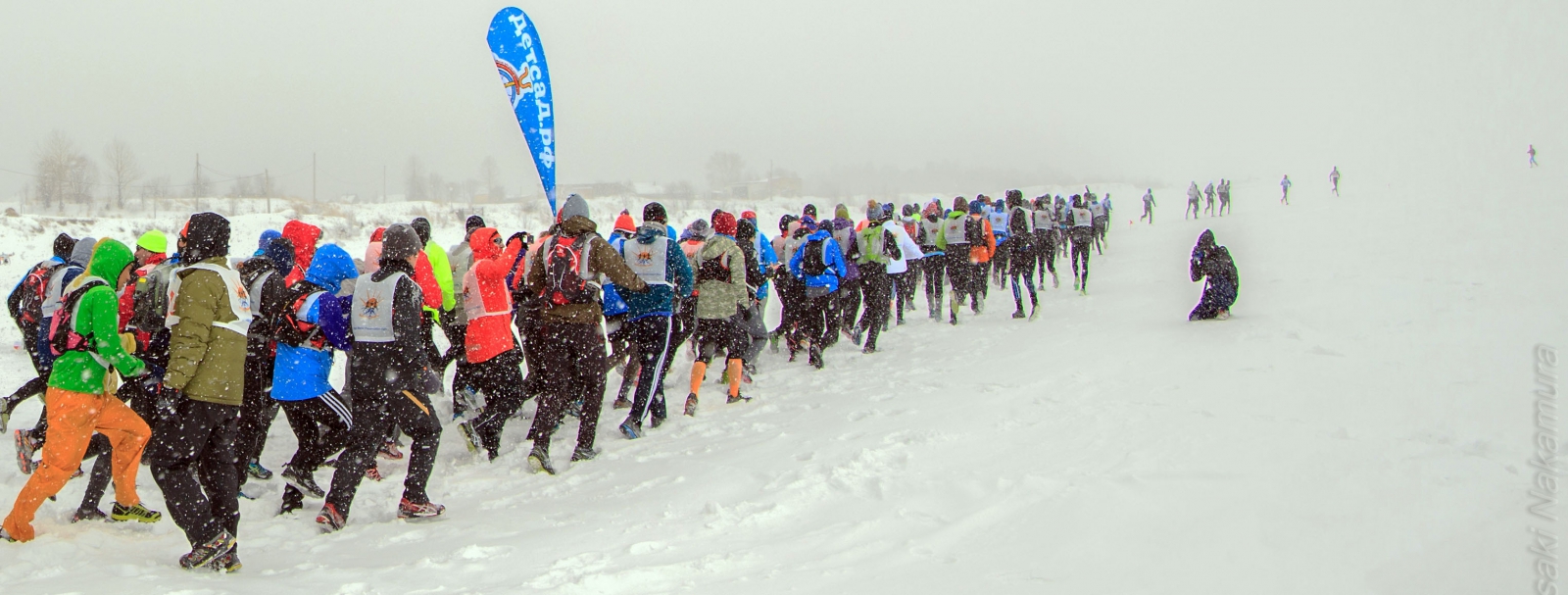
Magic of the Lake

«... One day prior to the start of BIM the sun was shining brightly but right before the start a storm warning came to us. Smiles on faces of participants who already were not in a hurry to the start line were replaced by anxiety and sometimes by fear. Everybody was gazing at a white far away horizon through big windows of a waiting hall and were watching how all red flags used to mark the course were buried under the snow together with the track. First few steps on the course gave us clear understanding that we all would be running on snow banks and the hope that it would be better a bit further never came true till the end of the marathon. My heart beat rate was much higher than usual due to the constant fighting with soft snow trying not to lose balance. We were swung from left to right by meters and coming back to a broken track and keeping balance was really very hard and required incredible efforts. Rigid facial expressions, tense silence, petrified looks at the single point right under the feet, stooping shoulders and frequent breathing became our new reflection in the snowy ice of Baikal. Nature made its own decision on the day of the marathon to bring three Baikal strong winds at the same time. Every wind has its own name according to the direction from which it blows. To bear them all is like wearing a piece of ice frozen on your left temple».
«...15 cm of soft snow is under my feet. It's ankle deep and it is snowing more. White desert is all around me. I cannot see the horizon, people running ahead of me are like in a fog. The main group of fast runners rushed forward – I am running with my own speed, no lightness, no easiness, my feet are sinking in snow like in sand, it is completely impossible to kick off. Some ideas to run at a certain pace are dropped. Main thing is to be within time limit. At the place of the first feeding station (7th km) I find out that I cannot open my mouth freely, one part of my body is kind of frozen because of side wind. Isostar bar got frozen in my pocket and I can hardly make a bite out of it. Tea is a real rescue at all feeding stations. After 10 kм the snowstorm stopped and we got some visibility. It became easier to run but snow was still there under our feet. Again, it started snowing and till 21 km mark I ran ankle deep in snow. It was some kind of Baikal snow marathon but not Baikal ice marathon on real ice with some portion of the track covered with some snow».
A short relaxation pause was waiting for us in the middle of the distance when fields of clean ice started coming out from under the snow and rare sun rays penetrated through heavy clouds. That was the moment when you could see a complete darkness of the abyss through a crystal-clear ice of the lake understanding that there were many kilometers of depth underneath you. Incredible feelings of the run above the abyss were amplified by cracks which were going down into the depths.
And right here in the midst of complete isolation and full silence Baikal started talking... One cannot describe with simple words those sounds produced by the lake covered by a thick layer of ice: deep, threatening, very powerful and unpredictable. Straight and brute force of nature which does not take into any account the sufferings of a small line of runners. Local people say that the Baikal lake breathes because the Lake is a living being. A huge monolith ice on the lake is moving producing those sounds. Animal fear made me speed up when Baikal having «whispered» to me for another time, threw an arrow to my feet which looked like a thunder.
Baikal was singing and was talking to us. It sounded like a shaman's ritual drum coming out from somewhere: charming but very frightening sound. At the first portion of the track there was nothing to listen to under the snow. Snow blanket of the ice absorbed all sounds....
.jpg)
In time a snow storm came. Snow was falling with big snowflakes and sticking all over us like a snowman. The ice surface became very rough in places and there were lots of big barriers made from broken ice and ice blocks.
After the next ice ridge, the snowfall stopped as if it was switched off. Suddenly it was light, the sun came out and the opposite shore was seen clearly. That gave some more strength to all runners – there was about 10 km left till the finish line. It seemed that the finish line was very close but Baikal prepared one more surprise for us. Five km before the finish strong gusts of wind came which were knocking people down and at the same time another wind was blowing from the other side.
.jpg)
«The runner in front of me was hardly moving. Then he stopped. He tried to run further but stopped again. There is a concept in running called “the Wall”. This is a place between approximately 35- 37 km when a runner bumps up against it during his race. This is a place where the whole calorie reserve is completely burnt out. He seemed to have been fighting with that wall trying to overcome it. Having reached him I started encouraging him: «Run, run! Not much left». That’s how I ran with him to the finish line encouraging him and helping him to labour and overcome the distance. We crossed the line together embracing each other and waving our hands to photographers and fans». – Igor Malykhin (Igor shared the 7th and the 8th place with British runner Benjamin Smith).
«... There were winds blowing from all over, from all po ssible sides. I had a wish to drop out of the race in this kind of weather though the finish line was not that far. All snow was gone with .jpg) the wind and for the rest of the distance we were running on the black ice of Baikal. Studs in my running shoes were holding me on the ice perfectly. I am looking at my stop watch and feel very happy that I am within the time limit. I am speeding up a bit and think that the finish is here but I am turned around slightly and sent in another direction.The finish is in about 100 meters and right in front of me there is a crack in the ice and a small self made bridge which is our final obstacle. I must use the bridge carefully to cross the crack. Here is the finish line. The adventure is over. My time is 5:57. I am within the limit. Because of weather conditions the race became a hard one and everybody agreed with even those sportsmen who had good experience of mountain trails and ultra-marathons…».
the wind and for the rest of the distance we were running on the black ice of Baikal. Studs in my running shoes were holding me on the ice perfectly. I am looking at my stop watch and feel very happy that I am within the time limit. I am speeding up a bit and think that the finish is here but I am turned around slightly and sent in another direction.The finish is in about 100 meters and right in front of me there is a crack in the ice and a small self made bridge which is our final obstacle. I must use the bridge carefully to cross the crack. Here is the finish line. The adventure is over. My time is 5:57. I am within the limit. Because of weather conditions the race became a hard one and everybody agreed with even those sportsmen who had good experience of mountain trails and ultra-marathons…».
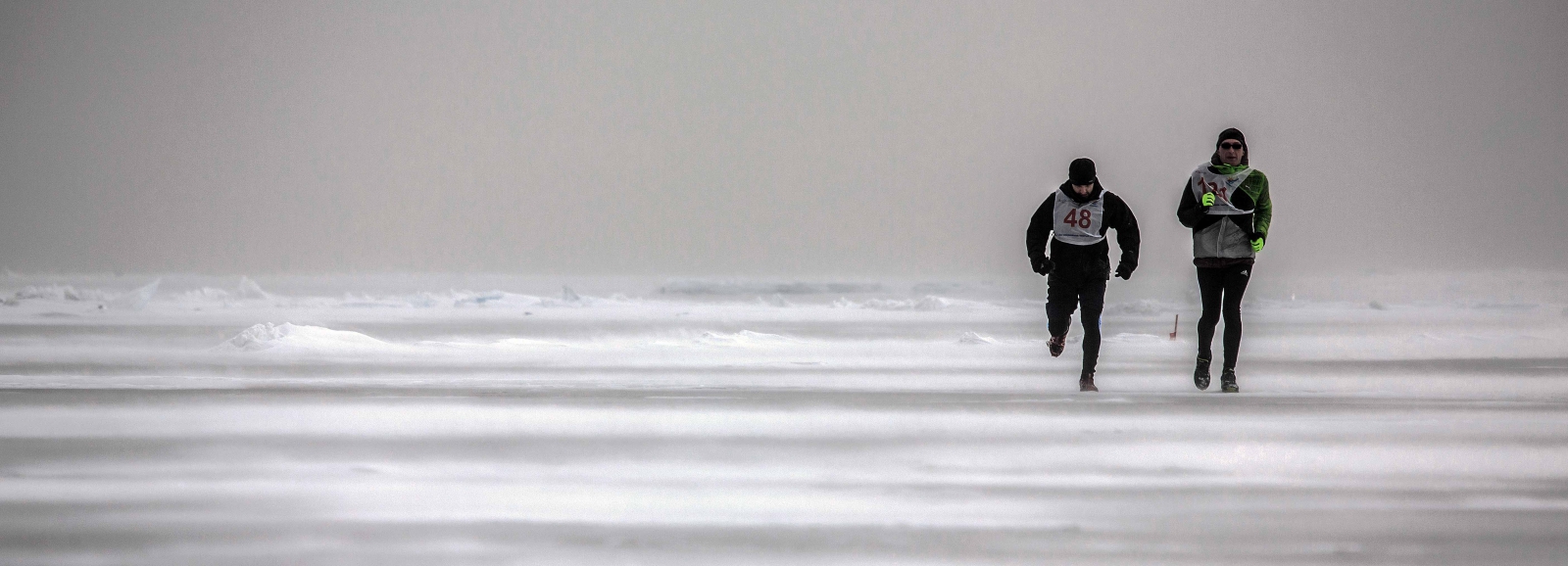
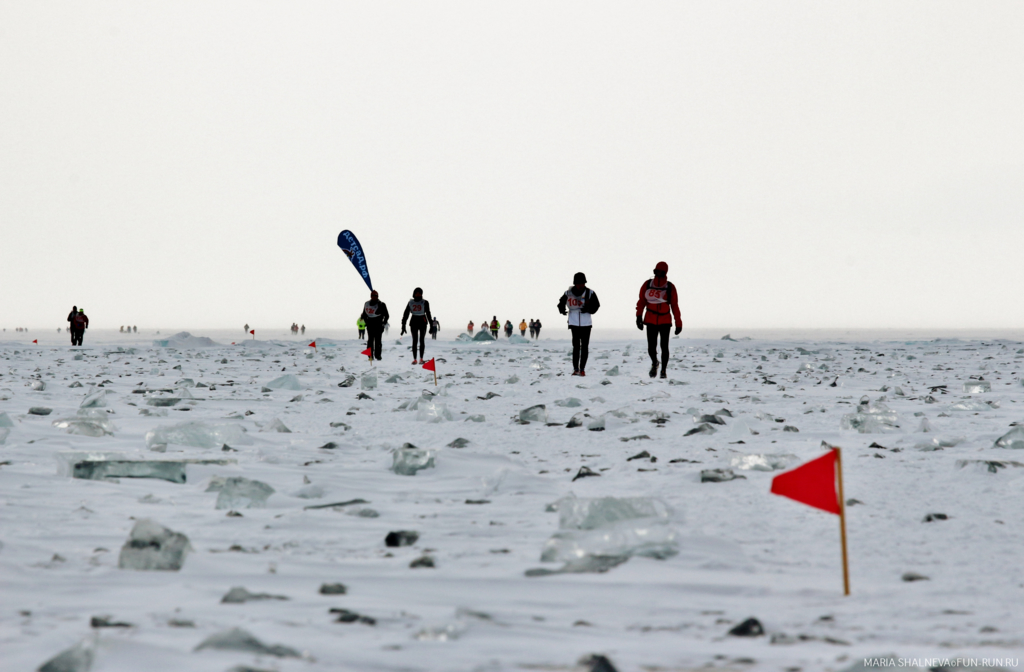
«... For a period of 11 years of Baikal Ice Marathon – the 11th marathon became the most extreme one. The hardest and the most severe one out of five I participated in» - said the winner of this year. Full practice, moral and physical depletion, injured muscles and ligaments, exhaustion and tears at finish line and some inhuman sounds bursting out from the very depths of a human-being, first ones after a full concentration and silence for the period of several hours. Does this look like a marathon? On the other hand, we have to ask ourselves: For what kind of impressions did you come here? And what did you expect to get here?»
«...Days are flying by fast but that day of March 1 does not leave my memory: Baikal, Tankhoi,Listvyanka, Ice marathon. One of the brightest tourist and sporting 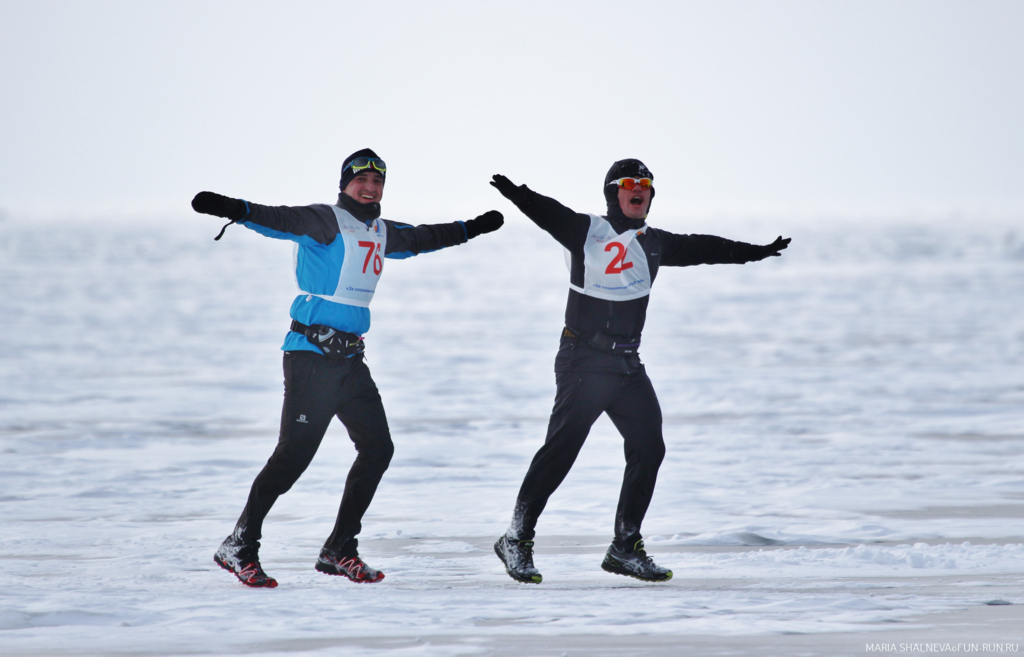 events which deserves to be on the first page of all media but hardly noted by them... Because it was 100% positive and had absolutely nothing to do with politics... I have never seen so many happy faces: different and beautiful, spiritually driven. There were no losers in that marathon and absolutely all participants were winners. Because every one of them got a win over oneself first of all which was the hardest one.
events which deserves to be on the first page of all media but hardly noted by them... Because it was 100% positive and had absolutely nothing to do with politics... I have never seen so many happy faces: different and beautiful, spiritually driven. There were no losers in that marathon and absolutely all participants were winners. Because every one of them got a win over oneself first of all which was the hardest one.
Is it not a record if you must run throughout a snow blizzard on soft snow, crossing ice ridges and hummocks of ice with a strong wind blowing in your face and none of them left the track?! Right after the start it seemed to us that  half of the runners would not reach even a half the distance. Everyone felt the cast iron character of Baikal in its true colours... The weather changed several times: the sun was coming out clearing the view of the opposite shore, mountain ridges bedazzling people by ice. The buzz and thethunder which cannot be compared with anything else were that music of a breathing lake Baikal. They were amplifying those impressions of the race. «You cannot imagine how hard it was to run there. Too hard, very difficult! But that was so cool» - one of the runners shared his impressions over the phone. «Of course we came here to get some adrenaline but not that much!» - says another..
half of the runners would not reach even a half the distance. Everyone felt the cast iron character of Baikal in its true colours... The weather changed several times: the sun was coming out clearing the view of the opposite shore, mountain ridges bedazzling people by ice. The buzz and thethunder which cannot be compared with anything else were that music of a breathing lake Baikal. They were amplifying those impressions of the race. «You cannot imagine how hard it was to run there. Too hard, very difficult! But that was so cool» - one of the runners shared his impressions over the phone. «Of course we came here to get some adrenaline but not that much!» - says another..
Despite the severe conditions of the run, Baikal Ice Marathon left so many unbelievable emotions and impressions. So we all have something to tell our grandchildren when we grow older! The Great Baikal showed us his character that helped us to see all faces of winter Baikal and hear his voice...»
Baikal in my heart
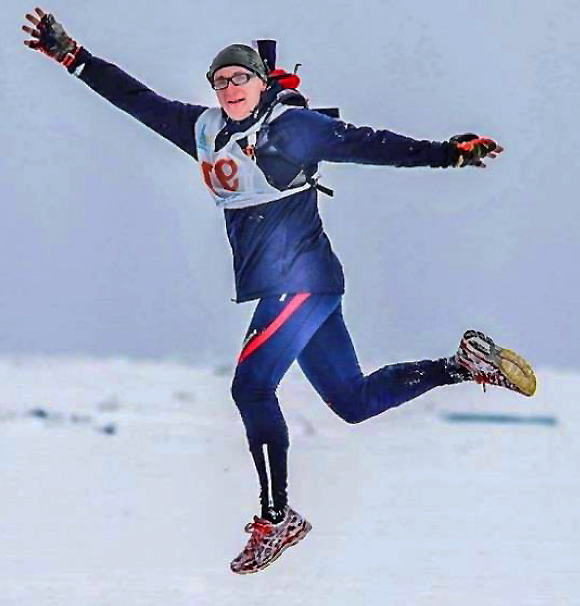
“That was not a run. It was a meditation, chat with the lake. He really talks. What fantastic sounds! Those who were there would understand me. When I crossed the finish line I was crying, and I was ready to run more and more. He really let me in, accepted me and tested me and when he recognised that I deserved it he gave me more strength. On the second portion of the race I passed about 20 runners. I was the 14th one to finish. First 21 km I ran freely and in accordance with my heartrate. Too many strange things happened to me during the run. Baikal switched off all my electronic gadgets: my cell phone, action camera, GPS navigator. Nothing was working. The only recording made by me during the race became a surprise for me because I was absolutely sure that I did not do it. Baikal did everything to keep the memory of him not on a gadget but in my heart. Baikal is not a race, not a marathon. People are coming back home being enlightened and you understand that you have touched something great that you cannot describe or explain. All finishers have that feeling of a stroke of genius» - Alexander Kaper
Living Being
 «Now after the finish I want to make it perfectly clear that while running you do understand clearly those words by organisers and local people that the lake is a living creature. He talks to you and understands all your thoughts, answers your questions and gives you a hand if you ask for it. It was several times when Baikal wanted to say something with its scary and loud voice of broken ice and a sound of a cannon... During the whole race you feel yourself to be an insignificant tiny piece of nature, feeling all the might of the Greatest Lake on the planet by all the cells in your body» - Ivan Serebryakov
«Now after the finish I want to make it perfectly clear that while running you do understand clearly those words by organisers and local people that the lake is a living creature. He talks to you and understands all your thoughts, answers your questions and gives you a hand if you ask for it. It was several times when Baikal wanted to say something with its scary and loud voice of broken ice and a sound of a cannon... During the whole race you feel yourself to be an insignificant tiny piece of nature, feeling all the might of the Greatest Lake on the planet by all the cells in your body» - Ivan Serebryakov
Sending impulses of goodness
 «I was coming here with a feeling of anticipation of meeting Baikal, to talk to him, to feel his energy. Before the start I went through a special local ceremony even twice! I ran well and easily without any extra tension and tortures like it had happened during previous years. I ran smiling because I was happy to meet the lake again. It was that transcendent feeling of my interflowing into Baikal nature and full harmony with it. We really talked to each other sometimes even aloud... I was irradiating kindness to him and he was replying over and over again amplifying those feelings. It's a well-known feature of the lake that he multiplies all your senses, emotions, wishes positive or negative. With that kind of inspiration, I crossed the finish line speeding up in the end of the race. Even after I finished the race I still felt lightheadedness and euphoria from Baikal energy. Baikal is a like a big living being! I was happy to meet him once again» - Nikolai Sustavov
«I was coming here with a feeling of anticipation of meeting Baikal, to talk to him, to feel his energy. Before the start I went through a special local ceremony even twice! I ran well and easily without any extra tension and tortures like it had happened during previous years. I ran smiling because I was happy to meet the lake again. It was that transcendent feeling of my interflowing into Baikal nature and full harmony with it. We really talked to each other sometimes even aloud... I was irradiating kindness to him and he was replying over and over again amplifying those feelings. It's a well-known feature of the lake that he multiplies all your senses, emotions, wishes positive or negative. With that kind of inspiration, I crossed the finish line speeding up in the end of the race. Even after I finished the race I still felt lightheadedness and euphoria from Baikal energy. Baikal is a like a big living being! I was happy to meet him once again» - Nikolai Sustavov
Lake plays with our energetics

«First impressions and emotions – crazy energy of the place. Abs olutely new impressions when you hear that the Lake is talking to you. You run and hear murmuring thunder blasts, crackle of the ice but they are all under us... That was a psychological test for us to be in conformity with yourself. The lake sent down lots of unexpected hardships. Starting from the beginning and for the distance of 15 km there was soft snow ankle deep, then the lake gave us some hope – small flat surfaces so our muscles could rest a bit, but in 300-400 meters you see in terror that snow is coming back again, then the sun comes out which is replaced by very strong wind. I guess it was some kind of a set of well-planned hardships from the lake which a man should overcome. Full and complete reboot: no mainstream thoughts, many things in life to think over... Seriously speaking: there is some magic in the place, it exists for sure...the Lake really played with the minds of the runners and tested us all» - Alexander Brechalov.
Real outer space
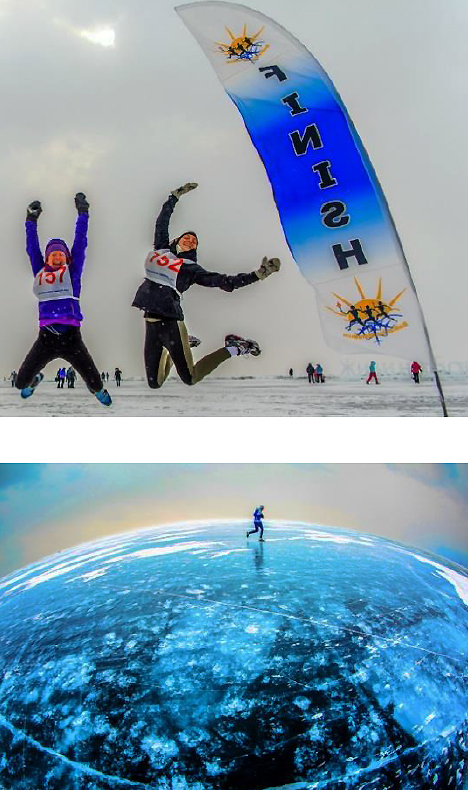 «I am really glad to meet so many great people during the race. Can you imagine how special they are to get together here from all over the planet? I guess that I need to run these 42 km across the lake getting prepared properly and not like this time. Such a cool atmosphere here, just a cosmic one!» -Peter Didenko
«I am really glad to meet so many great people during the race. Can you imagine how special they are to get together here from all over the planet? I guess that I need to run these 42 km across the lake getting prepared properly and not like this time. Such a cool atmosphere here, just a cosmic one!» -Peter Didenko
Healing Power
«I did understand one main thing here: when getting ready for the BIM it is necessary to tune yourself up not for the marathon itself (though technical details are also very important but not the principal ones), the essential thing here is to tune yourself up to Baikal lake! I do not know what other people feel but I do feel like that. When you managed to do it in a right way you even run differently. You run it and never overcome it and fight with it. You run easily and relaxed... Baikal begins helping you! Some of your illnesses accumulated with years are gone somewhere – Baikal is healing you! And that makes it to be not a run but a flight of soul! That snow hitting your face and that wind blowing into it does not seem to be a test for you but a friendly embrace of Baikal... And once again you want to come here and feel that sensation once again. Baikal Ice Marathon is a happy run!!! See you soon Baikal!» - Nikolai Sustavov
Award ceremony. Results not announced. 11th Baikal Ice Marathon team
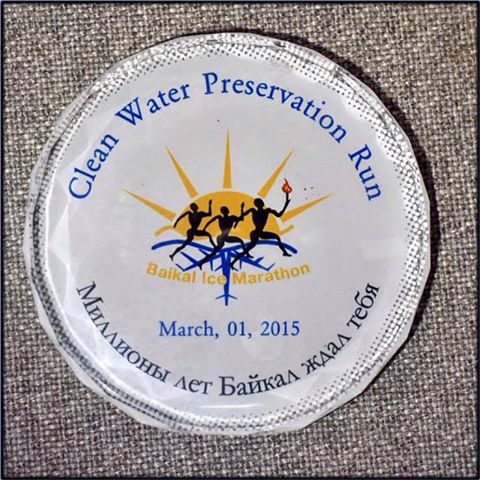 The awards ceremony for participants was carried out without announcing the time results because it did not make any sense. This time the issue was about examination of will power, spiritual strength and moral courage. In this case the winner was from far away Hong Kong who happened to be unbelievably strong though he was shivering from cold even before the start. He had been fighting the marathon distance for more than seven hours and was already out of the time limit, but he refused to give up and join the rescue team when it became dark making his way step by step towards the shore. He was allowed to reach the shore by just walking: the man got his moneys-worth from nature, which he had never experienced before, and his performance was outstanding. Reminding us that even in extreme situations a very motivated person can triumph, against the odds.
The awards ceremony for participants was carried out without announcing the time results because it did not make any sense. This time the issue was about examination of will power, spiritual strength and moral courage. In this case the winner was from far away Hong Kong who happened to be unbelievably strong though he was shivering from cold even before the start. He had been fighting the marathon distance for more than seven hours and was already out of the time limit, but he refused to give up and join the rescue team when it became dark making his way step by step towards the shore. He was allowed to reach the shore by just walking: the man got his moneys-worth from nature, which he had never experienced before, and his performance was outstanding. Reminding us that even in extreme situations a very motivated person can triumph, against the odds.
A new medal of the 11th marathon shows the main features of the race: snow, ice, wind.
The awards ceremony at the gala dinner was not carried out as it was originally planned but it was very festive. We apologised to the runners who saw their incorrect time results via electronic format and all errors were corrected. It was very pleasant to get very positive feedback from Alexei Komissarov who had an hour added to his actual time by mistake.
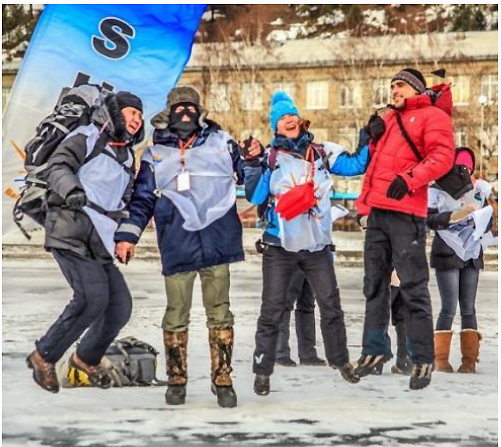 Having decided on March 1 to give everyone a chance to finish the distance until it got dark I unintentionally doomed the team of the 11th BIM to make mistakes. Two employees, who should have been transferring the results data onto certificates, were still outside waiting for late runners to finish. The judges and support team members were tested and exhausted after the 30th km but were waiting for the last runner to arrive. I would like to say special thanks to: Tatiyana Tashlykova and Tatiyana Derevnina, Aldar Batomunkuev, Vyacheslav Tarasevich, Alisa Vysokikh, Stanislav Pavlov, Eugenia and Svetlana Boryushkiny, Bair Dorzhiev, Galina Krasheninnikova, Nika Danicheva, Galina and Andrey for their joyful attitude towards their duties, kindness and goodwill towards all runners, resolve and efficiency. And also, a big thank you to our guides and members of the team of 11th BIM: Nikolay Alexeev, Tatiyana Sergeeva, Yana Grishenkova, Lyuba Belousova.
Having decided on March 1 to give everyone a chance to finish the distance until it got dark I unintentionally doomed the team of the 11th BIM to make mistakes. Two employees, who should have been transferring the results data onto certificates, were still outside waiting for late runners to finish. The judges and support team members were tested and exhausted after the 30th km but were waiting for the last runner to arrive. I would like to say special thanks to: Tatiyana Tashlykova and Tatiyana Derevnina, Aldar Batomunkuev, Vyacheslav Tarasevich, Alisa Vysokikh, Stanislav Pavlov, Eugenia and Svetlana Boryushkiny, Bair Dorzhiev, Galina Krasheninnikova, Nika Danicheva, Galina and Andrey for their joyful attitude towards their duties, kindness and goodwill towards all runners, resolve and efficiency. And also, a big thank you to our guides and members of the team of 11th BIM: Nikolay Alexeev, Tatiyana Sergeeva, Yana Grishenkova, Lyuba Belousova.

We could not show the time results of all age groups, as it was stated in Statutes of the marathon, so below you can find this information. Certificates were sent out to your specified addresses. We received much good feedback, a little criticism from others and some tales which were not so truthful. We are very glad that you could run your distances of the 11th Baikal Ice Marathon «For preservation of clean waters».

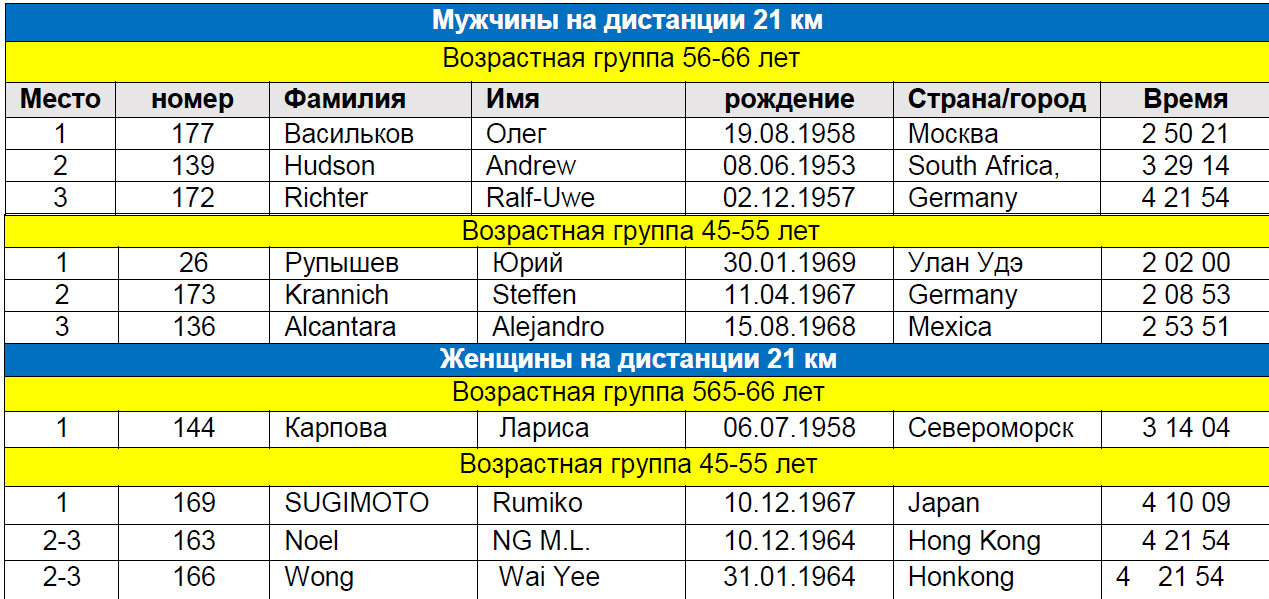
One of the athletes of the 11th BIM announced before the start that he was ready to conquer the lake on its ice track. It reminded me of when in 2004 I was showing the way across the lake, in a rowing boat, to the first man who would swim across it. He was a Japanese government employee Ikerasi Ken. Right before the very start of his swim he came out to the shore carrying a banner with Japanese characters on it. They meant: «Ikerasi Ken dares Lake Baikal to a fight...». And as soon as Ikerasi presented the samurai banner in front of the lake a sharp gust of wind came out from somewhere into the quiet sunny August noon. The weather between the village of Buguldeika and the delta of Selenga river was completely spoiled in contrast to all forecasts and expectations and became a stormy one. A strong north – western wind started to blow. It was a local wind usually lasting at least four days. A local and very competent citizen Matoshkin, Buryat by nationality, prepared a special shamanist ritual which was carried out to calm down Baikal and by the evening the lake had become suddenly quiet and was still. Early morning the next day we put out to the sea which was smooth and calm. That day a Japanese swimmer managed to swim across lake Baikal...
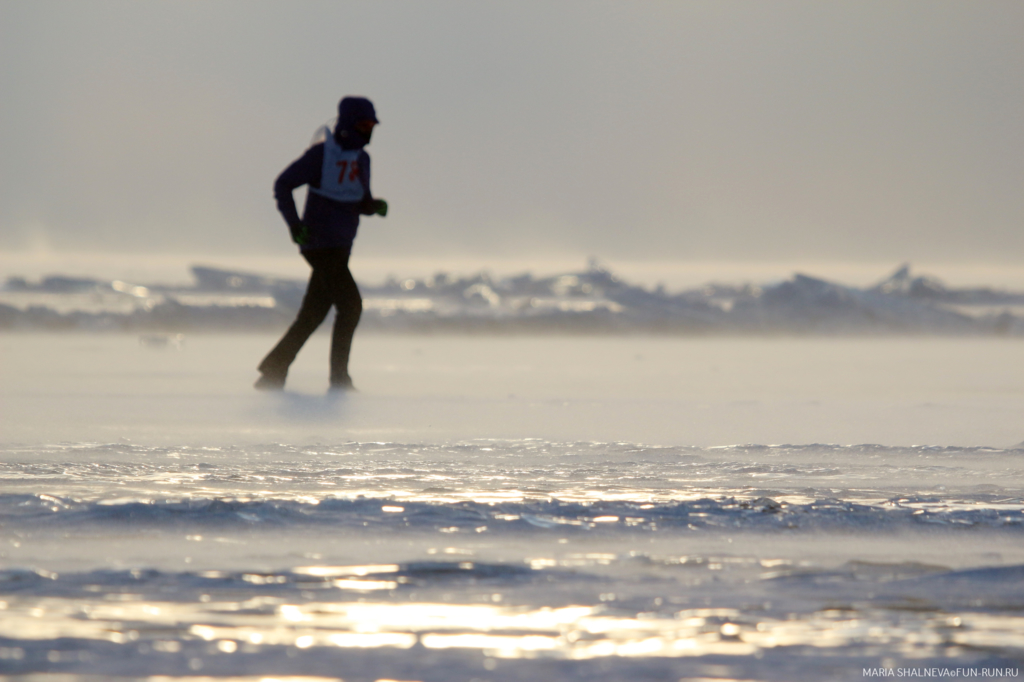 We will also keep in our records those words about the lake written by Nikolai Sustavov from the city of Omsk when he came to his regular meeting with the lake on the 1st of March 2015 after he ran his 103rd marathon:
We will also keep in our records those words about the lake written by Nikolai Sustavov from the city of Omsk when he came to his regular meeting with the lake on the 1st of March 2015 after he ran his 103rd marathon:
“I was coming here with a feeling of anticipation of meeting Baikal, to talk to him, to feel his energy. Before the start I went through a special local ceremony even twice! I ran well and easily without any extra tension and tortures like it had happened during previous years. I ran smiling because I was happy to meet the lake again. It was that transcendent feeling of my interflowing into Baikal nature and full harmony with it. We really talked to each other sometimes even aloud... I was irradiating kindness to him and he was replying 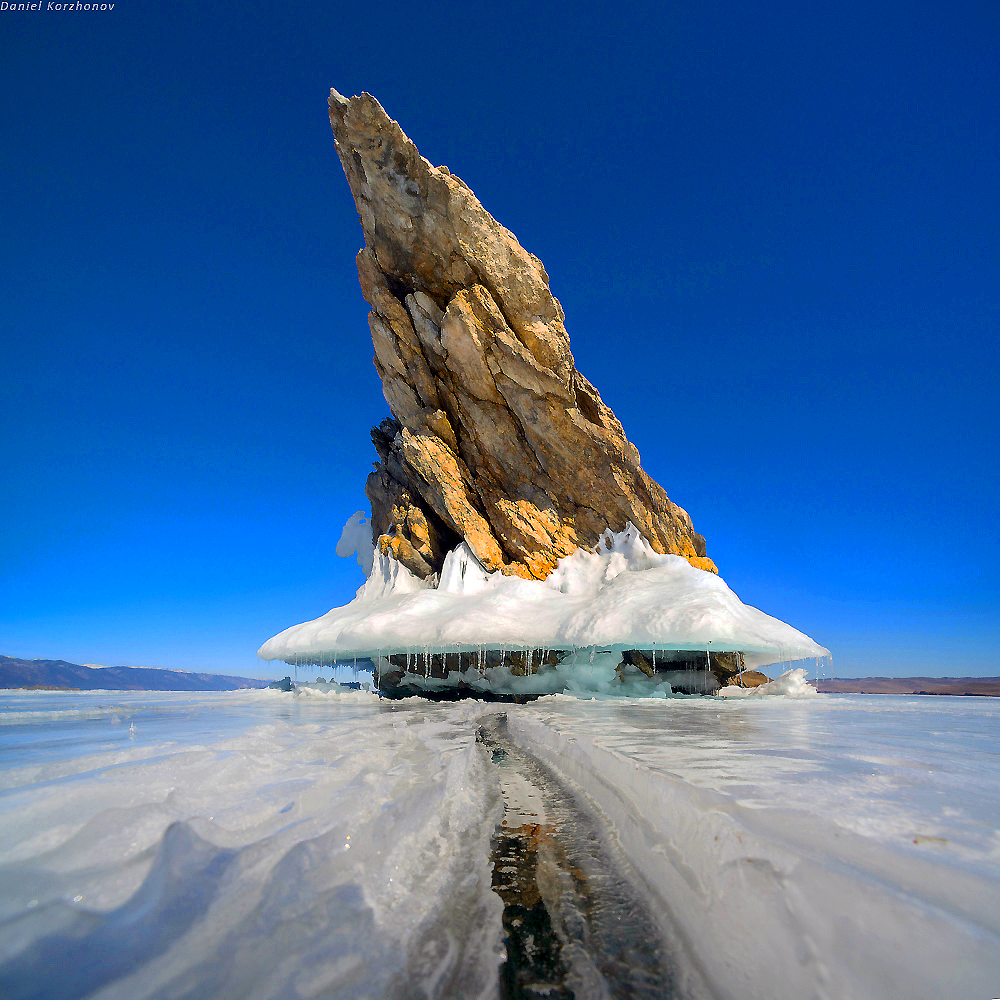 over and over again amplifying those feelings. It's a well-known feature of the lake that he multiplies all your senses, emotions, wishes positive or negative. With that kind of inspiration, I crossed the finish line speeding up in the end of the race. Even after I finished the race I still felt lightheadedness and euphoria from Baikal energy. Baikal is a like a big living being!
over and over again amplifying those feelings. It's a well-known feature of the lake that he multiplies all your senses, emotions, wishes positive or negative. With that kind of inspiration, I crossed the finish line speeding up in the end of the race. Even after I finished the race I still felt lightheadedness and euphoria from Baikal energy. Baikal is a like a big living being!
I did understand one main thing here: when getting ready for the BIM it is necessary to tune yourself up not for the marathon itself (though technical details are also very important but not the principal ones), the essential thing here is to tune yourself up to Baikal lake! I was happy to meet him once again. When you manage to do it right you even run differently. You run it and never fight with it. You run easily and relaxed... Baikal begins helping you! Some of your illnesses accumulated with years are gone somewhere – Baikal is healing you! And that makes it not a run but a flight of soul! I do not know what other people feel but I do feel like that. That snow hitting your face and that wind blowing into it do not seem to be a test for you but a friendly embrace of Baikal... And once again you want to come here and feel that sensation once again. Baikal Ice Marathon is a happy run!!!»
A fontanel of Planet Earth
"Holy sea", "sacred lake", "sacred water" – these are several names of the lake from ancient times used by the local Russians who settled on its shores in the 12th century and travelling foreigners bowing to the grandeur of the lake, its mystery and beauty. The admiration and worship from simple through to highly educated people was wide-ranging, from the belief that the lake held mystic powers to the aesthetic and scientific wonderment of others. Every time a person saw the lake they were dumb-founded because Baikal was too large to fit in an ordinary person's spiritual and materialistic imaginations. Baikal was so massive, located in an unusual place with features and complexities of nature so uncommon and unique that it could at once stir the souls of those normally indifferent to nature. It was something extraordinary...»
 The man who said that about Baikal is our prominent great countryman Valentin Rasputin, who passed away in spring this year and who was truly fighting for the genuine water of lake Baikal and who did not accept the construction of Boguchany hydro-electric power plant. Till his dying days he believed in salvation of the Angara river and a chance of keeping the heritage of Russian and Siberian culture on its shores. The grief for not being able to reach his goal stayed with him till the end.
The man who said that about Baikal is our prominent great countryman Valentin Rasputin, who passed away in spring this year and who was truly fighting for the genuine water of lake Baikal and who did not accept the construction of Boguchany hydro-electric power plant. Till his dying days he believed in salvation of the Angara river and a chance of keeping the heritage of Russian and Siberian culture on its shores. The grief for not being able to reach his goal stayed with him till the end.
Well of the Earth, Blue Eye or the Pearl of Siberia, A Gate to the Earth's deep interior. In Mongolian language the word «Baigal» means «nature», the essence of the nature of everything, some scientists even compared Baikal with a scar on the face of Asia, though the word «smile» would fit better. Each of these comparisons would be fair and can be understood.
I am pretty much sure that one more description could be added to a row of synonyms of Baikal and that is «a fontanel of the Earth». Two meanings – one content...
 Extract from encyclopedia: A fontanel is an anatomical feature of the infant human skull comprising any of the soft gaps between the cranial bones that make up the skull cap of an infant. Fontanels stretch, allowing for the rapid growth of the brain, which grows faster than the surrounding bones of the skull. If there is an increase in body temperature in a baby above 38 degrees, a thin film of the fontanel becomes a ventilation system, providing cooling to the brain. With increasing intracranial pressure, the fontanel slightly swells and rises above the rest of the skull, warning of danger.Through a large fontanel, a baby also receives cosmic energy and can see what adults can no longer perceive.
Extract from encyclopedia: A fontanel is an anatomical feature of the infant human skull comprising any of the soft gaps between the cranial bones that make up the skull cap of an infant. Fontanels stretch, allowing for the rapid growth of the brain, which grows faster than the surrounding bones of the skull. If there is an increase in body temperature in a baby above 38 degrees, a thin film of the fontanel becomes a ventilation system, providing cooling to the brain. With increasing intracranial pressure, the fontanel slightly swells and rises above the rest of the skull, warning of danger.Through a large fontanel, a baby also receives cosmic energy and can see what adults can no longer perceive.
Ancient legends of Buryat people from Kabansk tell us: “and there were tremors of the earth which made a crack wider than the Selenga river and fire rushed out and spread all over the place. Buryats pleaded to their god, Ever Blue Sky, for the fire to stop but could not hear them or could not see them because of the fire. The Buryats then started begging the Fire itself shouting: «Bai, Gal» - Fire, Stop. Suddenly the flames started easing and the whole crack was filled up with water.”
Most probably the ancient Buryats saw fire tongues of burning methane after catastrophic eruptions or earthquakes or just saw the Earth mantle and renamed the lake after that: BaiGal – “Standing Fire”.
The earth crust by the lake has a gigantic rift crack with its bottom end measuring a depth of 25 km and further down to 50 km into the upper mantle of the Earth.
In the southern tip of the lake, where BIM usually takes place, one cannot find crystalline bedrock at the bottom of the lake. A very powerful sonar signal is usually lost inside the sediments at around the 8-9 km mark (maybe ancient legends about the bottomless lake are true?) Right under the Khamar-Daban range and by the base of those mountains, where our athletes started the marathon this year, an active hot spring of magma (scientists call it a plume) and sacral energy of our Earth is coming out freely to the surface of the lake.
Baikal, and other powerful places where the Earth emits strong vibrations, is in a zone of energy channels on our planet where one can feel a realm of communication through those vibrations. This is why many athletes of BIM not only heard but also eagerly talked with the great Baikal during their run.
Earthquakes in the range of 3 to 7 points on the magnitude scale is not a rare event at the lake. About 2,000 tremors and earthquakes are registered annually. A month before the marathon during a week in January there were approximately 50 earthquakes of various strength and were felt even in the southern part of Baikal.
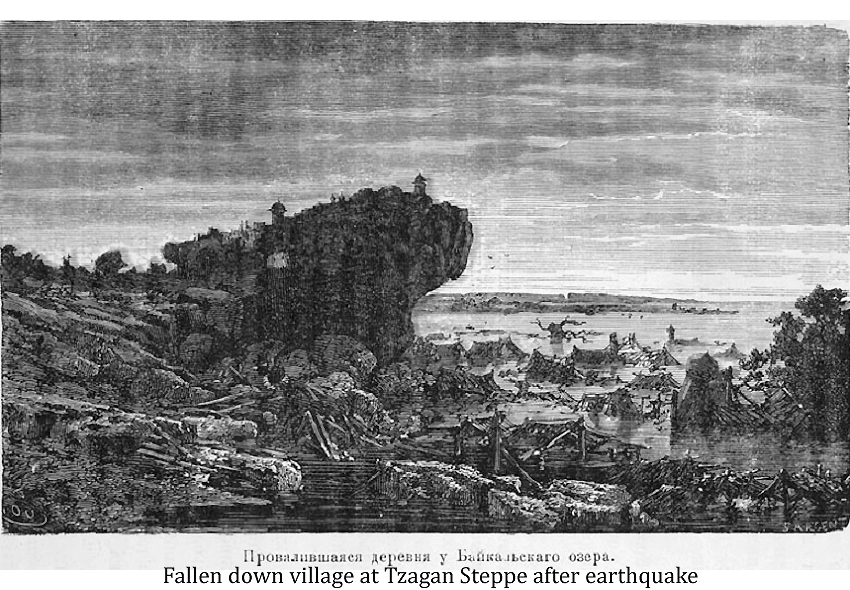 During the strongest earthquake in January of 1861 (Tsagan earthquake) “...after a loud underground noise there were such tremors that people and cattle could not just simply keep standing on their feet and 320kg barrels of fish were rolling from one end to another one in our yards. Big cracks were formed in the ground from where water with silt was coming out, silt water was also forced up out of wells to the height of 3 meters”. Those tremors broke the ice of Baikal that time and a 3-meter-high tsunami wave penetrated into the mainland for several kilometers. The water swallowed more than 200 square km of the Tsagan steppe including five villages. At that very place a new bay was formed called Proval (the Gap) close to the delta of the Selenga river.
During the strongest earthquake in January of 1861 (Tsagan earthquake) “...after a loud underground noise there were such tremors that people and cattle could not just simply keep standing on their feet and 320kg barrels of fish were rolling from one end to another one in our yards. Big cracks were formed in the ground from where water with silt was coming out, silt water was also forced up out of wells to the height of 3 meters”. Those tremors broke the ice of Baikal that time and a 3-meter-high tsunami wave penetrated into the mainland for several kilometers. The water swallowed more than 200 square km of the Tsagan steppe including five villages. At that very place a new bay was formed called Proval (the Gap) close to the delta of the Selenga river.
In 1912, there were three big earthquakes close to the southern tip of the lake, one of them caused a huge emission of gas into our atmosphere (next to Sharyzhalgai station of Circum Baikal railroad). That happened in August and just prior to the earthquake, local people were observing the phenomena in the form of columns of water shooting up high in the air having brought thousands of dead Golomyanka fish down onto the lake. In 1959 after the Angara river was dammed and the Irkutsk hydro-electric power station reservoir was full – there was another, this time around 7 to 8 points. The seismic shaking caused cracks on walls, stoves were damaged, and the colour of the water changed in the lake, a column of water appeared there and the bottom of Baikal dropped for 10-15 meters. And quite recently, the earthquake of 2008 in August (the towns of Baikalsk and Slyudyanka, registered 9-8 points) was witnessed and perfectly described by those watching on the shore of the Lake.
.jpg) N.I. Мarchenko and L.P. Тelegina (town of Slyudyanka): “Fishermen using several boats were fishing not far from the shore by Mangutai. It was still, and the water was quiet on the lake. Baikal possesses the ability to change the colour of its water. The lake may be blue, turquoise, grey, lead grey and the color of the lake does not depend on the color of the sky. Suddenly the water became black and there was a noise coming from the depths. Being familiar with the character of the lake all fishermen headed back towards the shore and landed their boats. Then events developed quickly. The sound came first like an explosion and a huge water column grew over the surface of the lake breaking into waves in a moment. All sounds were coming from the depths and they sounded like coughing and groaning. Over the surface of the lake one could see phantoms: images of boats, ships (the visions were the same for each witness) followed by sounds. Soon all visions disappeared and the water on the surface started foaming. A humming sound was being amplified by the surrounding mountains. The Earth started swinging from side to side – and the earthquake began”.
N.I. Мarchenko and L.P. Тelegina (town of Slyudyanka): “Fishermen using several boats were fishing not far from the shore by Mangutai. It was still, and the water was quiet on the lake. Baikal possesses the ability to change the colour of its water. The lake may be blue, turquoise, grey, lead grey and the color of the lake does not depend on the color of the sky. Suddenly the water became black and there was a noise coming from the depths. Being familiar with the character of the lake all fishermen headed back towards the shore and landed their boats. Then events developed quickly. The sound came first like an explosion and a huge water column grew over the surface of the lake breaking into waves in a moment. All sounds were coming from the depths and they sounded like coughing and groaning. Over the surface of the lake one could see phantoms: images of boats, ships (the visions were the same for each witness) followed by sounds. Soon all visions disappeared and the water on the surface started foaming. A humming sound was being amplified by the surrounding mountains. The Earth started swinging from side to side – and the earthquake began”.
A story by V.I. Popov, a fisherman from Utulik settlement: “Suddenly the water level of the lake dropped. A sound was coming out from the depth and it seemed to me that it was very near to me as if it was under my feet. A long increasing humming sound came. Big waves sprang up on the surface, the ground started shivering and looked like there was a wave on the ground beneath me. It was not that solid like it used to be a moment ago, it resembled jelly. This earthen wave picked us up and immediately found us 15 meters aside from the place where we were standing a second ago. Then the wave streamed back and brought us back in seconds”.
At the very same time, 10 km away, right across from the town of Baikalsk at the depth of 1 km, a deep water vessel «Мir» with hydronauts on board was drawing samples from the bottom of the lake. The bottom sediments were stirred up and they found themselves in a dense white cloud of strange matter. The cloud was like milk and one could not see samples nor sampling equipment from outside the vessel. The shaken and scared hydronauts were told about the earthquake only after they resurfaced.
There are more powerful seismic events in the Baikal region but there have been no fatalities during 150 years of the catastrophies. Only two or three from Tsagan steppe were killed when they tried to take all the cattle away from upcoming water.
From patent report «Water intake was located 60 kм to the north – east of Kultuk earthquake. Before August 27, 2008 and during the last 1.5 years there was no significant changes in the content of helium in the samples of deep water of lake Baikal. However, starting from August 14 till August 18 helium content started fluctuating... Two days prior to the earthquake the concentration of helium decreased to the point lower than the background level (4.79) and stayed on that level till August 26. Next morning it increased up to 5.61 ...On the 28th of August the helium content return to its normal background level. Decreasing of the level content of helium and then its sharp increase on the eve of the earthquake could have been an indicative sign of upcoming seismic event. If Baikal will be sending us these signals in the future, we can hope that we will be able to set a short-term prognosticator of an upcoming earthquake» -
A Sentient Messenger
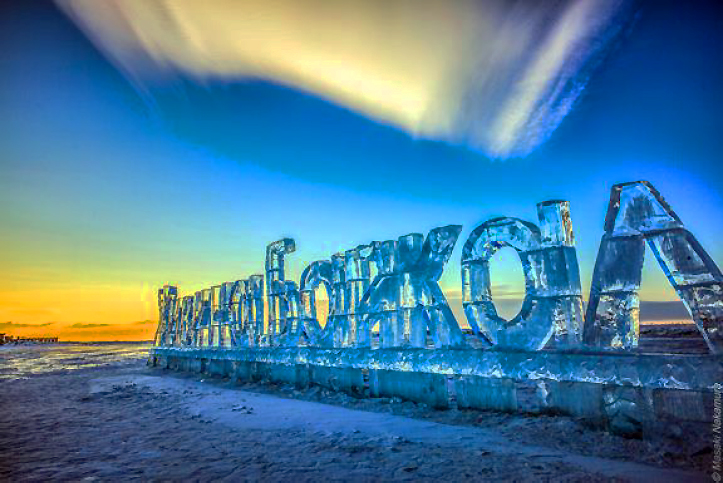 Recently I came across a very interesting reference regarding Lake Baikal in a great ancient Hindu epic Ramayana. It is described in detail in Valmiki Ramayana how Vanara people following order from their King Sugriv to find Cita queen had to travel throughout lake Baikal and then along the Angara river to get to the northern ocean. Giving instructions to his Vanara monkey like people, and describing the road throughout the country of Uttarkuru towards the Kara sea, the King was talking about the lake called Vaihana which from Sanscrit language can be translated as the lake of “ deep and powerful thought”. The King told that on the shores of the Vaikhana lake the Vanaras would meet enlightened rishis tribe - the Vaihanasa sages, “who are self-controlled, who having overpowered their senses cleansed their souls of all sins through penance, who are engaged there in meditations and oblations into Ritual fire, and through meditations were drawing the Supreme energy”.
Recently I came across a very interesting reference regarding Lake Baikal in a great ancient Hindu epic Ramayana. It is described in detail in Valmiki Ramayana how Vanara people following order from their King Sugriv to find Cita queen had to travel throughout lake Baikal and then along the Angara river to get to the northern ocean. Giving instructions to his Vanara monkey like people, and describing the road throughout the country of Uttarkuru towards the Kara sea, the King was talking about the lake called Vaihana which from Sanscrit language can be translated as the lake of “ deep and powerful thought”. The King told that on the shores of the Vaikhana lake the Vanaras would meet enlightened rishis tribe - the Vaihanasa sages, “who are self-controlled, who having overpowered their senses cleansed their souls of all sins through penance, who are engaged there in meditations and oblations into Ritual fire, and through meditations were drawing the Supreme energy”.
Indian men of wisdom also called Baikal as Baakul (Bha-kula- भा कूल ) meaning «lake-light» or «shining lake». Аnd the name of the only beloved daughter of Baikal, the Angara river, is translated from Sanskrit as «heat of fire» or «fire within» (do you recall the Buryat name «Standing fire»)! Besides that, the word «Angara» is one of 108 names of the «sun», and in some ancient Sanskrit texts it meant something which was pushed out in favour of people, something like the delivery of a child.
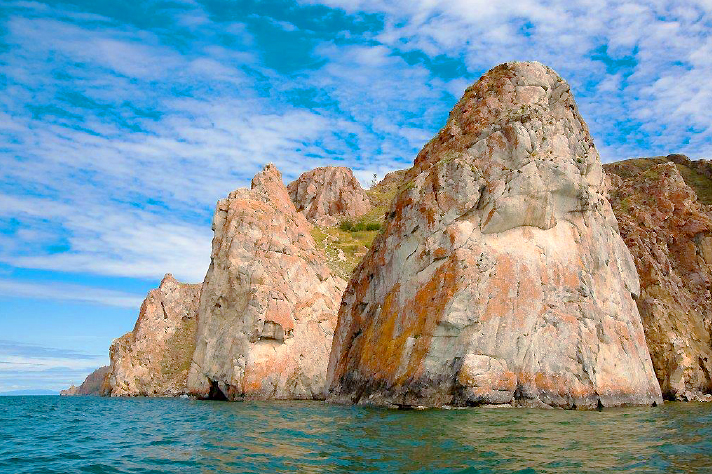 When a foreign body or anthropogenic contaminant enters the lake (crude oil from cracks and underwater volcanoes, heating oil or sewage) a great number of bacteria and microorganisms start propagating on the spot which feed on the contaminations. They localize the threat and effectively liquidate it until it is benign. Even pollution caused by a pulp and paper mill in Baikalsk was taken care of by the lake which naturally created a colony of endemic bacteria. Canada water weed which was once called «water thyme» appeared in the lake and started colonizing but then disappeared.
When a foreign body or anthropogenic contaminant enters the lake (crude oil from cracks and underwater volcanoes, heating oil or sewage) a great number of bacteria and microorganisms start propagating on the spot which feed on the contaminations. They localize the threat and effectively liquidate it until it is benign. Even pollution caused by a pulp and paper mill in Baikalsk was taken care of by the lake which naturally created a colony of endemic bacteria. Canada water weed which was once called «water thyme» appeared in the lake and started colonizing but then disappeared.
No light can penetrate to the depth of 400 meters. Therefore, a neutrino telescope was installed at the depth of 1,000 meters (at complete darkness) so that the smallest extraterrestrial particles of the universe can be captured. However, electronic equipment showed that the water of the lake at that depth irradiates its own light which cannot be emitted from anywhere else down there. The glow has a different intensity and the deep water carrying the fluorescent glow in the abyss of Baikal is constantly moving. The secret of the Baikal glow has not yet been revealed. Scientists could not prove that water glow is caused by bacteria or algae or caused by eradiation of chemical matters and when trying to investigate and study the case the deep water stopped glowing after it was brought up to the surface of the lake.
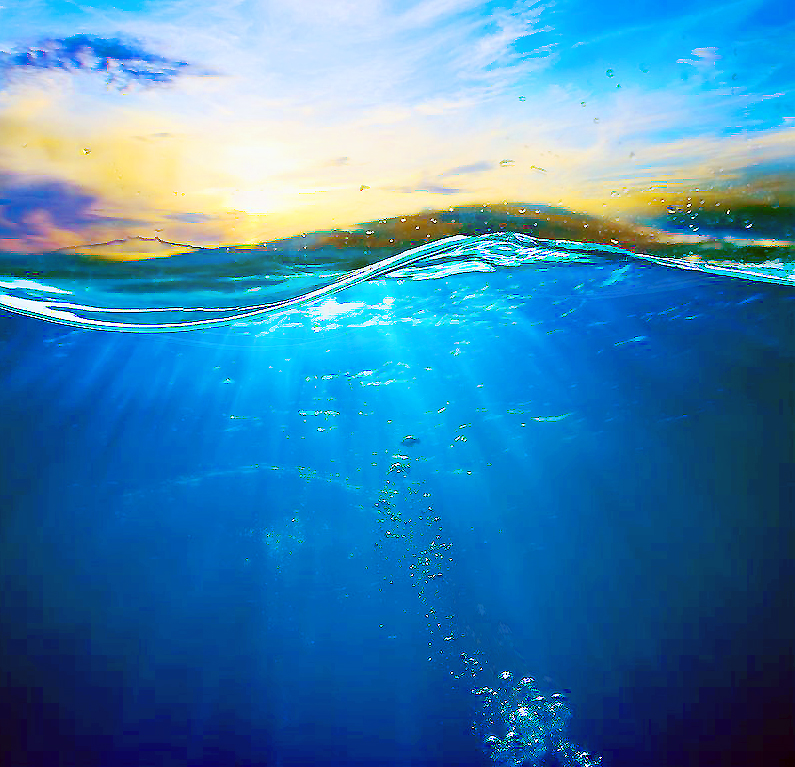 Prominent researcher of Baikal, professor of Irkutsk State University, Doctor of Sciences Vadim Takhteev shared his thought in a book: «Maybe a key to the mystery lies on another level of human perception and not in a field of science at all? Maybe Baikal is actually a gigantic, actively living and thinking super organism resting on its couch in between the mountain ranges? That glow is proven evidence of Baikal's life and, if you like, of his mental activity. Moving water masses taken by currents are information streams processed by an unusual and sensing being... »
Prominent researcher of Baikal, professor of Irkutsk State University, Doctor of Sciences Vadim Takhteev shared his thought in a book: «Maybe a key to the mystery lies on another level of human perception and not in a field of science at all? Maybe Baikal is actually a gigantic, actively living and thinking super organism resting on its couch in between the mountain ranges? That glow is proven evidence of Baikal's life and, if you like, of his mental activity. Moving water masses taken by currents are information streams processed by an unusual and sensing being... »
The depths of Baikal are fantastically rich in methane gas hydrates which rise from the deep interior of our planet (methane is the third gas by its occurrence in the universe after hydrogen and helium). Methans at the lake travel throughout the water and are sometimes ignited right in the water flaring up to 900 meters (evidence of scientists and hydronauts, 2005) and after reaching the surface make big openings in the ice surface in winter – sometimes with bubbling or boiling water and supposedly mysterious phenomena such as 4 km circles on the ice of Baikal. The luminous balls and flaring bubbles are formed by the eruption of underwater volcanoes of Baikal.
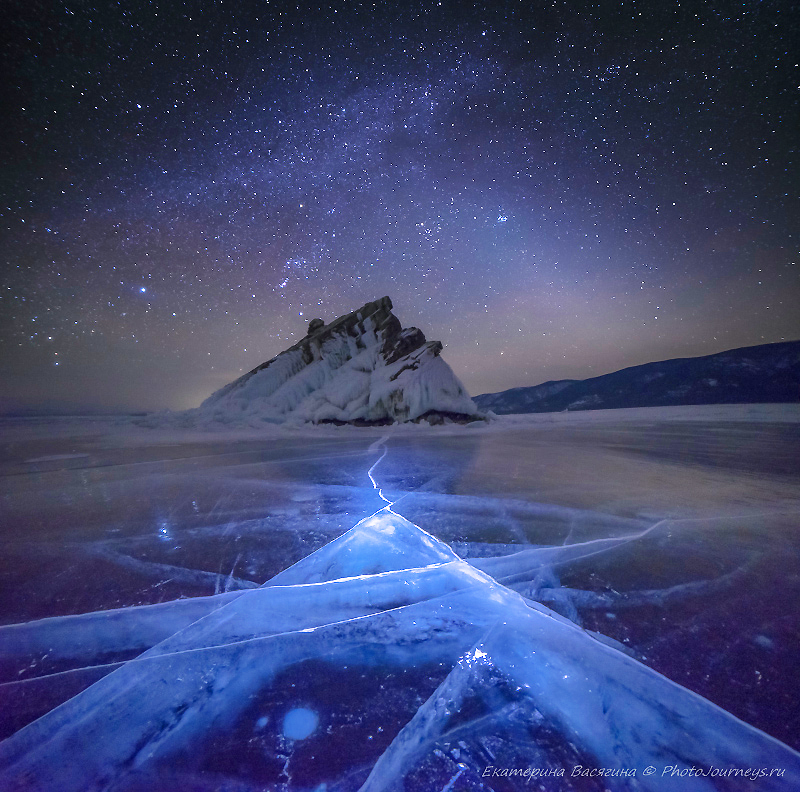
Baikal appears to be a huge organism with complicated currents, glowing at times with endemic purifying crustacea: a mass of water which absorbs cosmic energy reflecting information fields and giving answers to all sorts of questions asked of it. Baikal endows people with its energy, sharing it and many athletes can sense it.
Connected so closely to the earth, Baikal is a kind of a map of the whole environment. Processing information within its massive volume of water Baikal is sending a message from Mother Earth to us.
Like a colossal brain absorbing all incoming information, cosmic Baikal can still react to pollution caused by human activity. Implementing his abilities through a field of information, Baikal, so far, has mercy for the people living on its shores, making signs to us with sharp fluctuations of helium and with columns of methane coming out of the Earth to warn us all is not well.
Mother Earth - the “Wet One”
«Every single thing was given to you initially. You need just recognize it» - GOD
 In the early 90s I visited Shumak natural springs for the first time. It's a place high in the mountains, where hundreds of mineral springs come out from the earth and make their way, for kilometers, through the smallest tunnels of basalts and igneous rock. Watching the hypnotizing trickles of outflowing water, for the first time, I thought that maybe in the natural environment of the earth, there might not be that water circle that we are taught about at school. Later, during our winter expedition to Northern Mongolia, we stopped at a bizarre river ice formation in the Darhat Basin. Dr. Vyrkin Boris, a well-known scientist in his field, travelled with us. Looking at the bulging, colossal icy mounds on the river, I asked him: "Where does the water come from?" Not surprised by the question, Professor Vyrkin, a doctor of geology, soon replied "I do not know, but not from that water cycle. Probably, our God gave it to us ... ". He did not know how inspired I was by the answer because it made me "sort it out" personally.
In the early 90s I visited Shumak natural springs for the first time. It's a place high in the mountains, where hundreds of mineral springs come out from the earth and make their way, for kilometers, through the smallest tunnels of basalts and igneous rock. Watching the hypnotizing trickles of outflowing water, for the first time, I thought that maybe in the natural environment of the earth, there might not be that water circle that we are taught about at school. Later, during our winter expedition to Northern Mongolia, we stopped at a bizarre river ice formation in the Darhat Basin. Dr. Vyrkin Boris, a well-known scientist in his field, travelled with us. Looking at the bulging, colossal icy mounds on the river, I asked him: "Where does the water come from?" Not surprised by the question, Professor Vyrkin, a doctor of geology, soon replied "I do not know, but not from that water cycle. Probably, our God gave it to us ... ". He did not know how inspired I was by the answer because it made me "sort it out" personally.
Our outstanding scientist Igor Yanitsky was convinced that morality and observance of the Biblical commandments should be considered in any scientific research, when setting up theoretical and practical tasks of science. Just listen to Yanitsky's next scientific (not emotional) conclusion: MORALITY IS ANTIPODE OF ENTROPY ..., which, according to the Second Law of Thermodynamics, means ORDER AND LIFE, against CHAOS and DEATH defining ENTROPY.
Yanitsky's conclusions form a clear idea of the Earth as a highly organized and ultimately energy-saturated, living organism. Yanitsky justified that the realisation of any variant of the geophysical catastrophes he examined depends only upon our own behavior: "The Earth as a self-regulating system in response to external (from outer space) and internal (from unreasonable technological human activity) effects with the accuracy of an ideal computer "switching on" compensatory mechanisms to maintain vital parameters. However, every year it becomes more difficult for Mother Earth to compensate for mankind’s hooliganism, accompanied by emissions from the deep interior plasmoids, earthquakes, tsunamis, other anthropogenic disasters.
Yanitski received a fundamental result, proving implementation of energy transduction and transformation it into the matter and back in our nature. Herewith transmutation of energy into water is carried out by the Earth at every step...
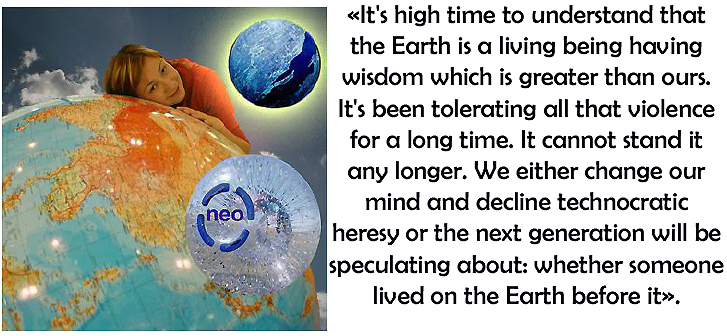 Yanitski's research and the analysis of his fellow scientists showed that a notorious hydrologic cycle in our atmosphere forms only a background distribution of only 25 millimeters of water in any place above us all over the Earth! And all solar energy coming down on us is not enough to produce one litre of water...
Yanitski's research and the analysis of his fellow scientists showed that a notorious hydrologic cycle in our atmosphere forms only a background distribution of only 25 millimeters of water in any place above us all over the Earth! And all solar energy coming down on us is not enough to produce one litre of water...
«Everything, including weather, comes out of Earth», - Igor Yanitsky claims speaking about the presence of colossal water reservoirs in the depth of the planet. Our planet has only four or five hyperbaric regions which control the weather. Among these there is the Baikal lake which forms and shapes the weather on a gigantic area of Eurasia through its west-Mongolian connection – Baidrag-gol («inexhaustible deep source»).
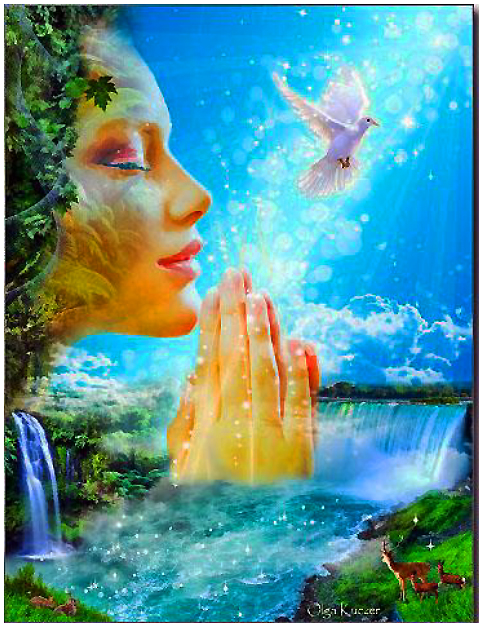 «Mother Earth-The Wet One» is a Russian wisdom (not an epithet). It came to us in legends and sagas or by narrations from the past. Our ancestry respected and worshipped the Earth considering it to be a living being and it reflected the deep outlook of people from past eras.
«Mother Earth-The Wet One» is a Russian wisdom (not an epithet). It came to us in legends and sagas or by narrations from the past. Our ancestry respected and worshipped the Earth considering it to be a living being and it reflected the deep outlook of people from past eras.
Perhaps science considered the Earth’s mantle to be solid and dry and so the reasoning was that it was lifeless, unconscious cosmic rock. That's how during time we lost our respectful attitude to rivers, water and soil of the Earth. Fundamental and egocentric science took over turning the health of our environment away from the Earth and in the long run against the well-being of humans too.
Recently there was a stunning breakthrough for geological science: deep in the Earth’s interior there is a gigantic quantity of water which exceeds all the world's water on the surface...perhaps this could be the “brain of the planet” in the subterranean kingdom of Agartha?
Being aware that there is no hydrologic circle in terrestrial nature, and that it's our planet itself which creates water, one may conclude that there is no excessive and unnecessary water on Earth.
Our famous Baikal academician Grigory Ivanovich Galazii noted that when water reservoirs begin to fill up there are fluctuations on the surface in the first few meters of the water column.
For the last several dozens of years many earthquakes occurred in the world, with catastrophic consequences, only at the time when artificial water reservoirs became full. For example, in China at the construction site of the dam on the Sinfyn river, the area was historically considered to be free from any seismic activity. Right after the completed reservoir started to fill with water, tremors began. For six years 250,000 tremors occurred with a magnitude of up to 6.1 points. Every large water reservoir on the planet increases the pressure on our Earth and, as already known, through inertia slows down the rotation of the Earth by micro seconds. All dams in the world, by nature of their design, do not allow time for rivers to flow naturally, bringing water to the destination point and return and drainage is a necessary cycle in the ecosystem. Therefore, low water level seasons occur in one area and massive drainage in another.
Tatyana Alexeevna Tashlykova from the Institute of Geography (our permanent head judge of the BIM) is researching the problem of so-called induced earthquakes – e.g. caused by construction of dams and by formation of artificial water reservoirs. In one of her reports she said the following: «When studying all Angara water reservoirs, it was confirmed that in the upper part of the Earth's crust a growing stress deformity develops which may be followed by forced movements of tectonic blocks of anthropogenic layer of the Earth's crust in the form of induced earthquakes. For example: the earthquake on January 17, 2014 in the region of Boguchany water reservoir. »
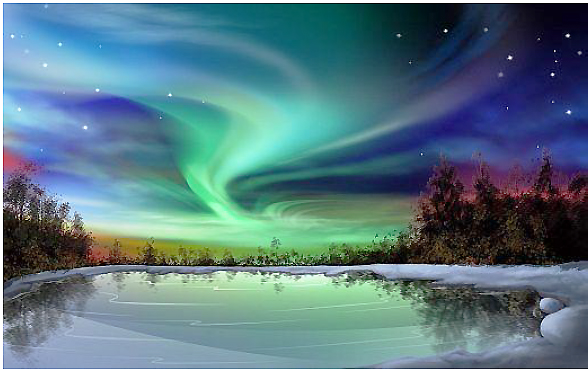 The Earth contains water and creates it. It is given to us clean and enriched by the cosmos with good and healing powers. Water has its own life cycle which is managed by the Earth. It is the giver of life as it enables all creatures and plants to live and flourish.
The Earth contains water and creates it. It is given to us clean and enriched by the cosmos with good and healing powers. Water has its own life cycle which is managed by the Earth. It is the giver of life as it enables all creatures and plants to live and flourish.
However, with the use of hydroelectric dams, we make it more difficult for the Earth to breathe. Our water suffers man-made pollutants, too numerous to mention, even in the Internet space, thoughts and words can destroy the integrity of water structure itself and the result is we return our gift of pure water to the earth in the foulest way. The Earth cannot continue to handle such a situation, it is as though she is no longer able to ennoble the structure of water returned by us in such a massively deteriorated form.
Today good intentions appear to prevail with construction of new hydro-electric power stations capturing only part of a river bed and only have small water reservoirs. Old dams have even been dismantled to release rivers. In our country and overseas, floating hydro-electric power plants have been developed so that full-scale construction will be cheaper and more environmentally friendly compared to present day stations. However, after the construction of the Boguchany hydroelectric power station (I hoped it would be the last ominous monument to Deripaska and the Rothschilds on the banks of the Angara river) there is talk now about other dams on our river!
A day before the 11th BIM an economic forum was held in Krasnoyarsk and attended by of our athletes who was a member. At that forum a general director of «ЕvroSibenergo» company announced its plans to construct on the Angara river the Nizhneangarsk hydro-electric power plant ! The construction site is supposed to be 120 km from the village of Boguchany. The whole river of Angara will be then regulated by power plants, from its outflow to almost the mouth. Then the Angara will completely lose its ardor and will die. Will that last power station have time to generate any power after filling another manmade sea?
Does someone need that plant? The whole system of power plants on the Angara river are only working at half capacity. If, at some geopolitical summit, unknown to public, it was agreed that nationals from another country can engage in industrial exploration and settlement in this part of Siberia, then it makes no difference, since the Angara will not be able to withstand the assault. The planet has had enough, we cannot allow insanity to take hold and allow another important natural feature on the Earth to be destroyed.
Feeling vibrations from the Earth
 On February 25, 2011 the Earth started speaking to us with its cosmic trumpet-like sound in a sacral cave of spirits in Tibet. Monks allowed Russian scientists to make a recording of the Biblical phantasmagory of sounds – the voice of the Earth.
On February 25, 2011 the Earth started speaking to us with its cosmic trumpet-like sound in a sacral cave of spirits in Tibet. Monks allowed Russian scientists to make a recording of the Biblical phantasmagory of sounds – the voice of the Earth.
On the November 5, 2011 all АТROPATENA stations (geophysical stations which record variations in the Earth's gravitational field) were registering 3D variations and recorded a powerful gravitational impulse practically simultaneously (the stations are in Istanbul, Kiev, Baku and Islamabad with a distance between each of 10,000 km). That powerful energy emission from the core of our planet at the end of 2011 became a start signal (as geophysicists say) telling us about a transfer of inner energy of the Earth into a new active phase. Since 2012 the sound intensity has increased many times: The Earth was actively sounding in Moscow and Kiev and not a single tone in Krasnoyarsk, Slovakia, Munich, Finland, Texas or Costa-Rica. From last year all those sounds were heard clearly all over the world. There can be various reasons for the global booming: gravity deformation of the Earth, the tendency for pole displacement, friction of tectonic plates and even the screech of Hell. But this can also mean that Earth is not just grumbling but starting to groan as well. The Earth may be feeling unwell, and in a little while may need to turn over on its side.
One British gentleman (his name was lost in my archives) – a supporter of «Terra Viva» campaign and «Gaia Planet» of James Lovelock- expressed this idea as follows: "The boom is a protest, obscure grumbling of the Earth who feels as sick as those who can hear it. We have to listen to it before that boom turns into a death rattle”.
And if Agartha or Shambala do exist inside the Earth, this can also mean that besides Mother Earth-the-Wet there are other earthly inhabitants (wiser than us) who can be harassed by human activities.
 It's high time for everyone to hear the voice of our planet and tune our minds to the vibrations of the Earth. Just stop littering your brain with ideas about UFO’s as if it gives you the answer to all incomprehensible phenomena, and spending billions and trillions of your possibilities stubbornly striving to reach other planets. No one knows whether we will be able to find a new shelter after we have littered our planet. And will They let us in? Will they communicate with us, at all, and share their knowledge with us? We are still barbarians, egoists with that science of obscurantism which tries to satisfy its curiosity and financial ambitions. Our civilization is responsible for bringing this disaster to ourselves and to the Earth. The threat from us has already moved outside our planet and Baikal, this year, also sent a warning signal of a booming Earth to us.
It's high time for everyone to hear the voice of our planet and tune our minds to the vibrations of the Earth. Just stop littering your brain with ideas about UFO’s as if it gives you the answer to all incomprehensible phenomena, and spending billions and trillions of your possibilities stubbornly striving to reach other planets. No one knows whether we will be able to find a new shelter after we have littered our planet. And will They let us in? Will they communicate with us, at all, and share their knowledge with us? We are still barbarians, egoists with that science of obscurantism which tries to satisfy its curiosity and financial ambitions. Our civilization is responsible for bringing this disaster to ourselves and to the Earth. The threat from us has already moved outside our planet and Baikal, this year, also sent a warning signal of a booming Earth to us.
A British astrophysicist, an astronomer of Her Majesty, Lord Martin John Rees in 2004 in his book “Our Final Hour” compared a man with a fish which can be aware of the medium in which it lives and swims; but understanding the water is beyond its comprehension. Martin Rees is sure that all kinds of experiments that crash atoms together with immense force could start a chain reaction that erodes everything on Earth; the experiments could even tear the fabric of space itself, an ultimate "Doomsday" catastrophe whose fallout spreads at the speed of light to engulf the entire universe.”
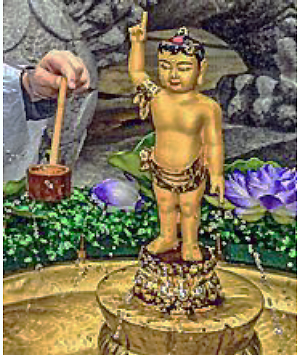
And if we do not stop ourselves we will be stopped forever. It would be very useful to recall one story described by Bulgarian writer and philosopher Pavel Vezhinov. In his book “The Scales” he vividly described how the temporary loss of personal memory and brain injury (when the hippocampus is damaged) brings a man back to that space of real perception, in which he, when coming back to senses, suddenly and unconditionally likens himself to a branch of a tree or a bird sitting on the branch. So we have to strike the hippocampuses of each other in order to perceive this world truly, and without surprise sense our unity with planet Earth. It’s time to start our movement inside and not outside. I am sure that only then our abiotic cells will come alive and unfold the strength of our DNA given to us by our Creator.
" Look up in the sky and let your soul rejoice: you have everything to strive for. Look down at the ground, bow your head and reconcile. Try to go to the sky remaining on the ground” - aphorism of one Lama
Prophesy and reality: warnings, duty and responsibility of choice
 Once there lived on the shores of Baikal and near the Island of Olkhon a Buryat fortune-teller and the prophet named Barnashhe (or Varnashka Birtagayev). He predicted electricity, radio, slaughter of the Tsar family, dekulakization (dispossession of kulaks), seven decades of new power, the Great Patriotic War ("will begin in the west, end in the southeast and only five or six would return home out of every 10).
Once there lived on the shores of Baikal and near the Island of Olkhon a Buryat fortune-teller and the prophet named Barnashhe (or Varnashka Birtagayev). He predicted electricity, radio, slaughter of the Tsar family, dekulakization (dispossession of kulaks), seven decades of new power, the Great Patriotic War ("will begin in the west, end in the southeast and only five or six would return home out of every 10).
Barnashhe had the gift of feeling the subtle and persistent sensations of nature of "Baigal", which are laid in any person, but for various reasons, almost no one is touched by that. Barnashhe preached that the location of God was in the soul of a man and the World Soul, the God permeates space and time.
The Buryat fortune-teller lived near the shore of Lake Baikal and could communicate with the Lake at a level of a mental exchange of perceptions. He could draw knowledge or get visions of the future from the "pillars" of the information space concealed in Baikal water.
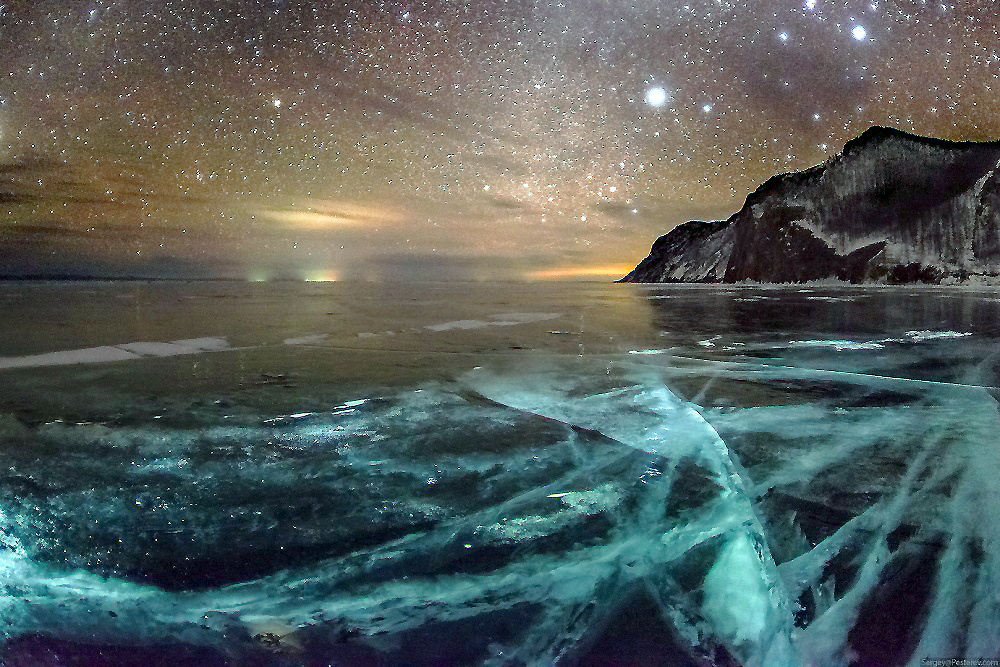
Barnashhe did not go to school but he understood "the sanctity of water and the value of its every drop, in which the mind and memory of the whole world are concentrated." From one of his predictions about the Buryats themselves and the future of Baikal, locals learned that "black gold will be recovered from the bottom of Baikal and all water from the lake would be pumped into an artificial basin." After this prediction, modern underwater research scientists of Baikal estimated oil and gas hydrate reserves to be in a record number. But due to its "youth" they are not subject to industrial development.
Baikal seemed to secure itself at a time when people, after emasculating oil and gas from the depths of the earth, would try to extract new energy resources from the Fontanel of our Planet. When scientists and hydronauts on Mir deep-water vessels chipped off a piece of gas hydrate from a piece weighing five kilos, laid it on a tray in the submarine and started surfacing it happened that the gas hydrate decomposed and its last remnants exploded at the depth of 200 meters from the Lake surface. However, it is known about Gazprom's bid to continue studying the deep gas hydrates of Lake Baikal as a promising fuel for the future! As if there are no other elaborations and scientific ideas for the benefit of all inhabitants of the planet regarding the cost for future generations of beneficiaries.
 In the town of Dubna (Moscow region) in 2003 a new source of alternative energy based on new materials was invented. It was called a “star battery”. It could accumulate energy with efficiency of 90% during night hours. Patent application was placed and several TV news reports in 2006 on the First channel were dedicated to the star battery but when our investors appealed to the Nornikel group of companies with a proposal to finance the project for industrial use, the head of Nornikel rejected the offer.
In the town of Dubna (Moscow region) in 2003 a new source of alternative energy based on new materials was invented. It was called a “star battery”. It could accumulate energy with efficiency of 90% during night hours. Patent application was placed and several TV news reports in 2006 on the First channel were dedicated to the star battery but when our investors appealed to the Nornikel group of companies with a proposal to finance the project for industrial use, the head of Nornikel rejected the offer.
At the same time, together with Interros company, they spent much more money (USD 217 million) to buy shares of an English company Plug Power dealing with development of hydrogen fuel elements. Then in 2007 Nornikel bought shares in a Canadian company LionOre Mining for $5.2 billion and 20% of Gold Fields Mining (South Africa) for another $1.2 billion.
Each of these companies are natural resources excavation organisations and all of them are obsessed by going deep into the interior of the Earth. Nornikel owners recognise their business as a “money making machine”. Nornikel emits 5,000 tons daily (!) of sour gas (SO2) in the atmosphere of Arctic Siberia which makes it 1% of the total worldwide emission of СO2! The state, and the whole world community, should ensure this private company is obliged to invest in developing a clean future. But so far they are allowed to cut the Earth in pieces, poison our air and water, putting pressure on the interiors of the Earth, all for monetary profit. They seem not to think about future of their offspring as though they have intergalactic space ships to leave the Earth and they know where to go.
 Perhaps it's not surprising in this case, knowing that a “silver plated aluminium oligarch” Oleg Deripaska (principal co-owner of Nornikel Company) is, if not a friend, but a fellow companion of Nat Rothschild. On board the Selenga boat, US Republican, John McCain is celebrating his 70th anniversary, Deripaska as large as life is noticed there in privy at Rothschild's villa in Korfu, and during lunches with Lord Mandelson and George Osborn discussing geo-economical problems and sometimes even the possibility of providing some financial assistance to Tori through the LeaLand Duff Co, (Deripaska's company in England).
Perhaps it's not surprising in this case, knowing that a “silver plated aluminium oligarch” Oleg Deripaska (principal co-owner of Nornikel Company) is, if not a friend, but a fellow companion of Nat Rothschild. On board the Selenga boat, US Republican, John McCain is celebrating his 70th anniversary, Deripaska as large as life is noticed there in privy at Rothschild's villa in Korfu, and during lunches with Lord Mandelson and George Osborn discussing geo-economical problems and sometimes even the possibility of providing some financial assistance to Tori through the LeaLand Duff Co, (Deripaska's company in England).

There are rare examples of state- run corporations like RusNano where you can see similar preferences in their investment plans. In 2009 Mr. Chubais, knowing already of the star battery invention, decided to spend Russian taxpayers’ money to finance the production of solar batteries as per Swiss technology. He started the construction of a plant to produce polysilicon however China had already started the construction of a whole chain of such plants which reduced to zero the strategic marketing efforts of Chubais.
RusNano started setting up subsidiaries overseas like RUSNANO USA Inc. in 2011 and one of the main goals was “promotion of assistance to all projects of the foundation and subsidiaries as well as to all infrastructural educational projects and support to its activity of the territories of the US and Canada”.
Paradox, nonsense or premeditation aimed at not developing our own Russian environmental protection technologies? Or it is unnecessary geopolitics regarding our countries? Who needs that kind of game ?!
One more example of non-required Russian technologies – fuel from garbage in the city of Tomsk: 4 kopeks for a litre of fuel. One small refining installation can produce 200 litres an hour. The plant provides itself with energy by using the same garbage! No atmospheric emission and synthetic engine fuel possesses some advantages allowing it to push out traditional fuels from the market in the future. The equipment developed in 2012 has universal features: one can even purify water with it and use this water again! In this case water intake area for people in cities can shrink up to 60%!!! In a housing and utility sector of modern Russia the usage of such equipment may became fantastically efficient and environment friendly since you don’t have to take the garbage out.
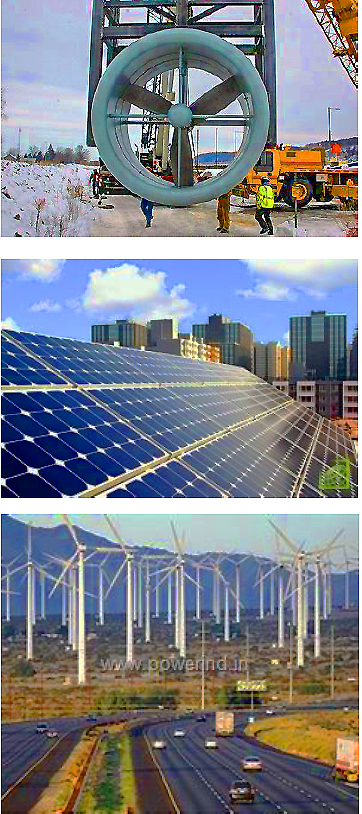 Even if the cost of that fuel is 20 rubles instead of 4 kopeks as there will be always someone against it. But this is just the start of that technology which will require its continuation on a wide scale. A further development might be all kinds of industrial applications to be used in car manufacturing and other industries following the principle of the clean trend.
Even if the cost of that fuel is 20 rubles instead of 4 kopeks as there will be always someone against it. But this is just the start of that technology which will require its continuation on a wide scale. A further development might be all kinds of industrial applications to be used in car manufacturing and other industries following the principle of the clean trend.
Take for an example a pyrolysis furnace using solid fuel (coal, peat, saw dust, scrap wood) its own cost may be lower than the cost of saved fuel during a season with minimal discharge without carbon black. And what's more...and more....
Why don’t the clean no-fuel technologies have full scale support? It's time to recall the story of Nikolas Tesla and practice of the Rockefellers and the Morgans who suppressed the future of such ideas to stay in control of the world all the time...
Therefore in 2013 in the US, President Obama appealing to the nation mentioned the progress which was achieved by the country, having increased two times the production of energy with help from wind turbines and solar equipment using Notrees battery storage technology.
Investment company Lazard reported on the pace of development of such good technologies supporting the Earth and people during the last five years: Levelised Cost of Energy produced with wind turbines dropped by 58%. The price of solar electricity decreased even more – by 78%. Last year the industry of renewable sources of energy in the US made up a revolution: the cost of electricity produced by renewable sources became lower than that produced traditionally at gas and coal power plants (December 2014: 1 кWt/hour of solar energy costs – 5.6 cents, and wind 1-1.4 cents – e.g. 77 kopeks, whereas in Irkutsk region (the most hydro-electric region of Russia) the tariff for electricity in 2015 is 92 kopeks!!). In the US wind turbines produce 5% of the whole electricity produced in the country. State authorities approved large investment projects to construct wind and solar electricity farms till the end of 2030.
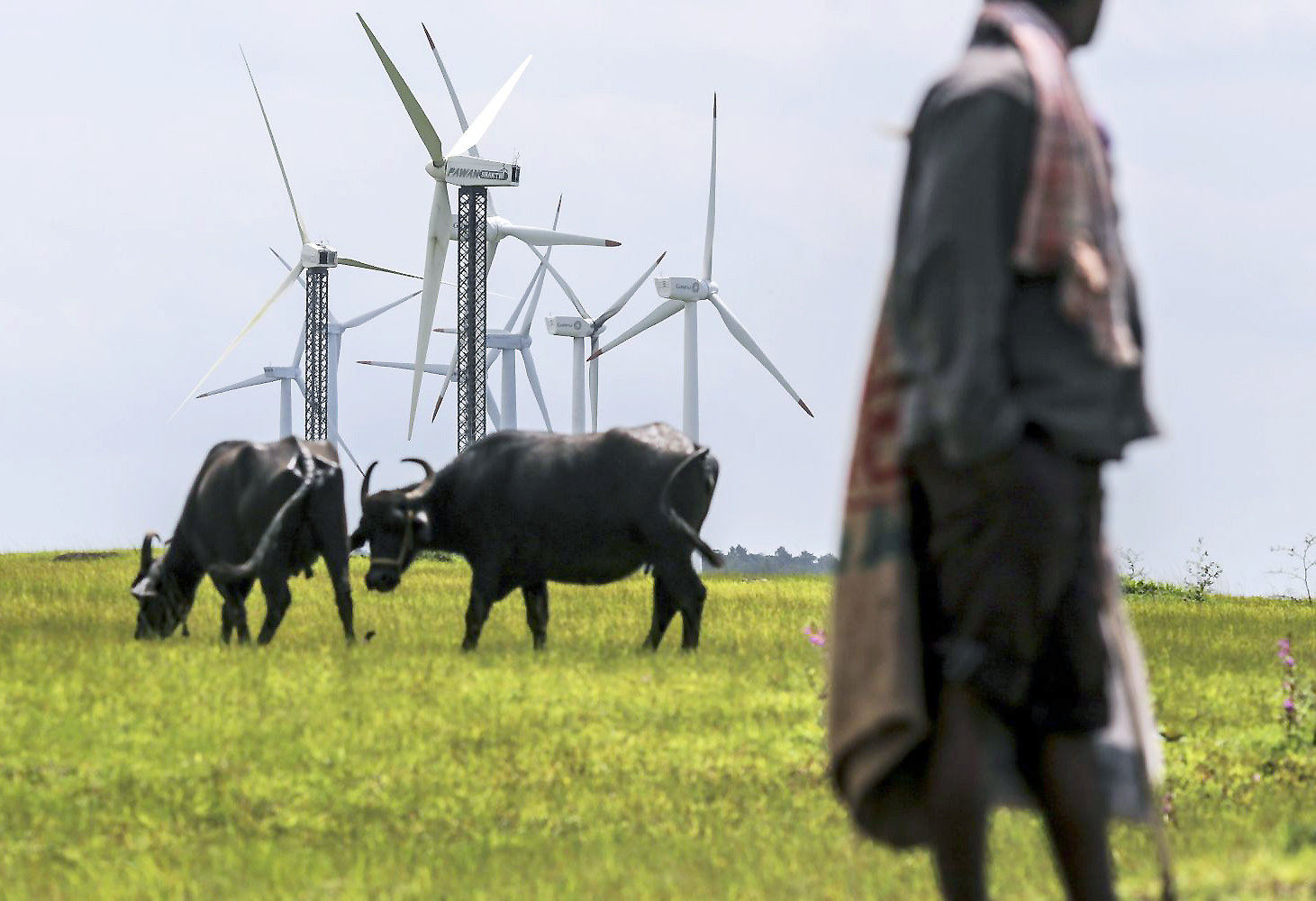 Farmers in Europe and overseas are happy to lease small plots of their land for wind farms. A picture on the left-hand side was deliberately chosen by me not from a European archive but from India where cows are sacred and highly valued for their milk. In one Indian state, Amberi wind farm company, Bharat Light & Power, erected a row of its wind turbine equipment right in the pastures. In the picture you can see a cattleman and his cows looking calm and tranquil, happy to share their land with the wind turbines which have no negative impact for the cows or their prized milk yields.
Farmers in Europe and overseas are happy to lease small plots of their land for wind farms. A picture on the left-hand side was deliberately chosen by me not from a European archive but from India where cows are sacred and highly valued for their milk. In one Indian state, Amberi wind farm company, Bharat Light & Power, erected a row of its wind turbine equipment right in the pastures. In the picture you can see a cattleman and his cows looking calm and tranquil, happy to share their land with the wind turbines which have no negative impact for the cows or their prized milk yields.
Modern wind turbines, from a distance of 200 metres, produce less noise than a home refrigerator. The construction of hundreds of wind farms, solar facilities or floating and tidal geothermal power plants will not devastate huge areas of forests and pastures or destroy cultures and precious memories of the people or put pressure on our Earth. Also, if there is any equipment failure in wind farms or floating power plants, disasters like the one at the Sayano-Shushenskaya HPP in 2009, would never occur ( the hydro disaster at this plant killed 70 people , 400 tons of trout; it took more than five years and over 40 billion of rubles to restore the HPP!) .
The money spent (over 165 billion rubles) on survey and construction works at the Boguchany HPP on the Angara river (hopefully, the last) would equal the cost to build 11 wind farms - enough to power all the homes in the entire population of the Irkutsk region of 2. 5 million people.
It would reflect well on Russia if a proactive approach was taken to develop alternative energy solutions in this country. The Lake Baikal area could be used as a pilot project for this very purpose. The future of Russia’s clean energy production could begin right here, enabling a starting point from which a strategy could be developed for the whole country.

However, in our great and enlightened Russia it seems that some pseudoscientific advisers to the President persistently and incorrectly tell him about the downsides and fallacies of wind turbines which only serves to keep our great country from progressing into the inevitable future of renewable energy.
I am far from thinking that some Illuminati, as in the recent past, may now again be influencing the state decisions made in Russia but there’s still some reason to think that someone in the immediate circle of our President is very craftily concealing the truth about the development and achievements of alternative energy production in the world.
And in the meantime, in seemingly enlightened Russia, we continue to blindly draw on the limited resources of Mother Earth, even though our state budgets reflect the intention for good planetary deeds and likewise, in our minds we remain mistakenly confident in our far-sightedness.
Contemporary US author and thinker Suzy Kassem wrote “The human body resonates at the same frequency as Mother Earth. So instead of only focusing on trying to save the earth, which operates in the same frequency as our own, I think it is more important to be one with each other. If you really want to remedy the earth, we must repair mankind. And if our intentions are bad, she reacts to it, as do all living creatures.”
It's high time for everyone to hear the voice of our planet and act. Each of us can do something to make the Earth balanced again, especially people in government and those making the important decisions

We see genius ideas and talented people flashing at us from TV screens but often their shows and programs sing the praises of individuals or groups of people, commodities and material careers, etc. Often mass media promoting the end of human civilization accustoms and schools people to despair which then generates a constant desire to consume more on the eve of the advertised doom. It would be so much more worthwhile if these genius ideas and talented people worked for the good of mankind and the Earth alike. Instead of the “doom and gloom” portrayed by television media, for example, the focus should be on hope and opportunity and a responsibility for future generations. How popular and interesting it would be to have people enthusiastically talking about the possibilities of harmony between humans and our home - planet Earth.
The good ideas and talented people we see on TV can be directed to promoting the wellbeing of the environment. And it would be interesting to see how it would unfold, bearing in mind the inventiveness and flexibility of Russian people.
In order to have special subjects in school curricula teaching students from the earliest age to respect natural resources and to have lessons on environment-friendly technologies; in order to have wise and educated people around the President of Russia advising him; in order to require (on a federal level) all gadget manufacturing and selling companies to have no less than 50% of application content promoting a proper attitude towards the Earth; in order for Gasprom and similar companies to really demonstrate they support the cultural heritage of the country, concerned about future generations, and not remembered only for their TV commercials; in order to think not only where to dig today and tomorrow and then tomorrow switch over to the development of an alternative or renewable energy; in order to have separate containers for garbage recycling appear by the lake and in the cities of Siberia and in Russia; in order to have such great ethnic groups of Siberia, like the Buryats, not only criticise the government and local authorities but to request for having clean outhouses close to their sacred places and clean amenities in the place itself etc.
In order to… and hundreds of times in order to… we need a state policy, current and strategic, with all starting points focused on a loving and protecting attitude to Mother Earth and ecumenical water. It's time for us to start racking our brains, thinking in the right direction and, probably, after that the second half of our brain will be activated with the keepers of the Earth.
.jpg) Already three years have passed since I started believing that many participants of previous editions of BIM and a major part of athletes of the 11th Baikal Ice Marathon from all over the world understand me perfectly. For all kinds of unbelievers, one can express it simply and more practically by saying it represents my personal values. One cannot save and rescue his grandchildren in a bomb shelter or on a remote island somewhere no matter how rich and financially influential a person is. To save them in future we can only leave them clean soil and clean water. Steven Wright once made a good point about it: «we do have lots of powdered water but nothing to dilute it with».
Already three years have passed since I started believing that many participants of previous editions of BIM and a major part of athletes of the 11th Baikal Ice Marathon from all over the world understand me perfectly. For all kinds of unbelievers, one can express it simply and more practically by saying it represents my personal values. One cannot save and rescue his grandchildren in a bomb shelter or on a remote island somewhere no matter how rich and financially influential a person is. To save them in future we can only leave them clean soil and clean water. Steven Wright once made a good point about it: «we do have lots of powdered water but nothing to dilute it with».
It seems there is not much time left to make a choice. And it is very important that our spiritual vibrations and the low frequency waves of the Earth comply. First of all, these are our thoughts, our perception of the world, our attitude toward the Earth and setting the right goal in our life and on our common home.
And that water which is around us and inside us will absorb willingly all positive emotions and feelings (for humans consist of 70% water, and the Earth on its surface also).
Cicero once said, “The Earth never gives back without surplus what it gets itself” and wisdom from North American Indians reads “We borrow this Earth from our descendants”.
Sincerely yours,
Аlexei Nikiforov
/Translated into English by Maybritt Prahl, winner of the 2012 Baikal Ice Marathon/
Photos by Masaki Nakamura, Maria Shalneva, Andrei Tanichev, Louise Murray, Harry Engels, Aleksei Nikiforov, Daniel Korzhonov, Yekaterina Vasyagina
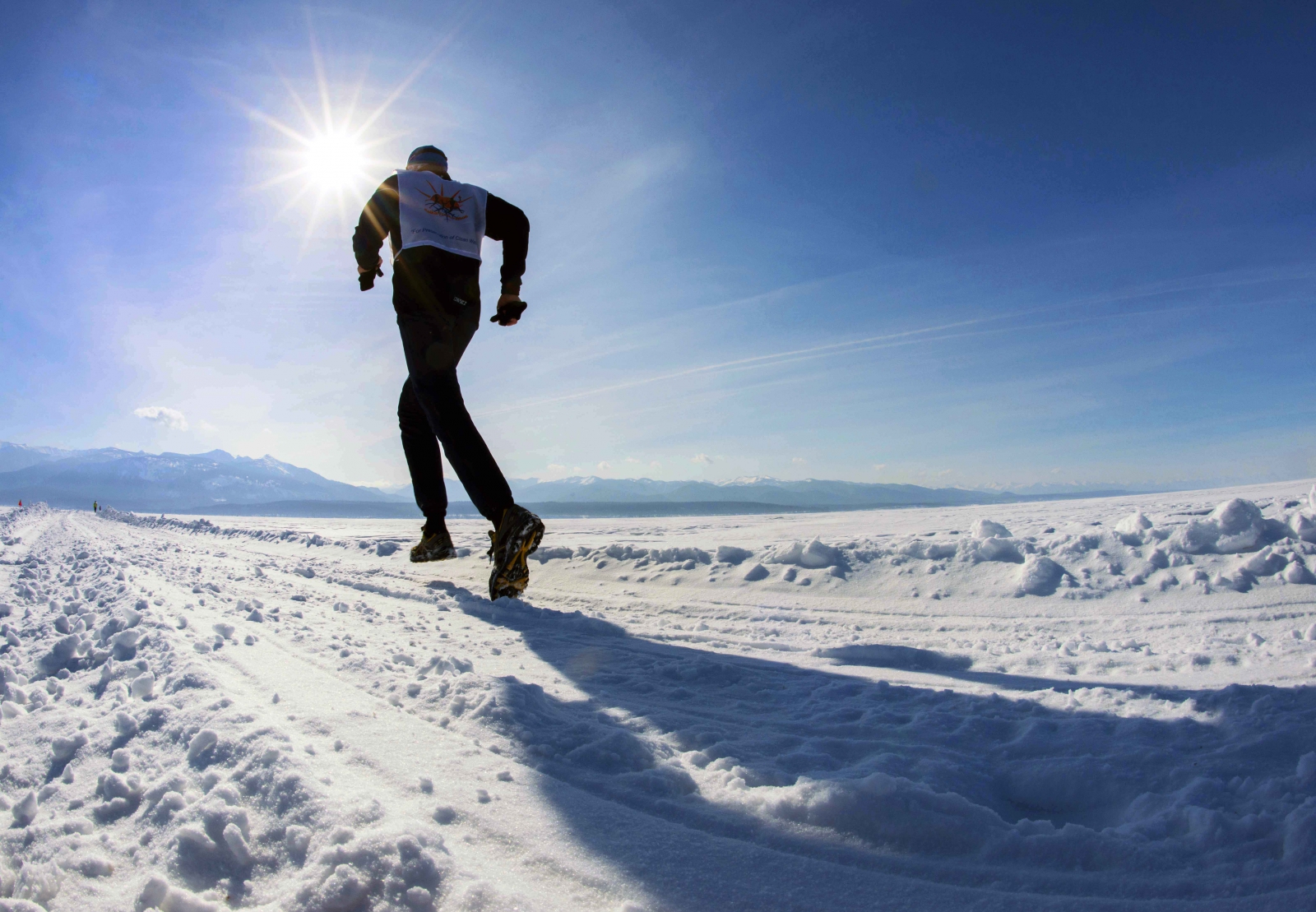

.JPG)